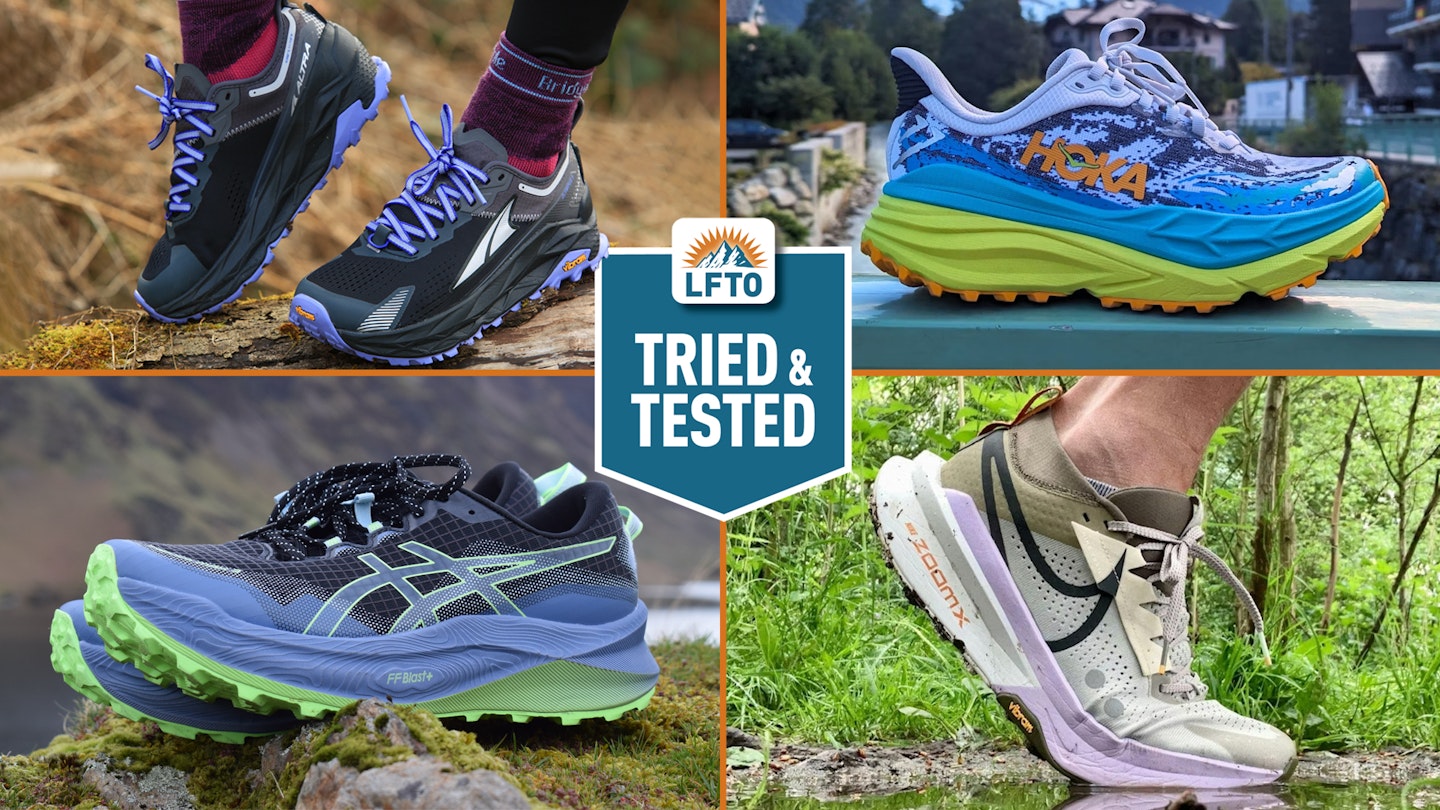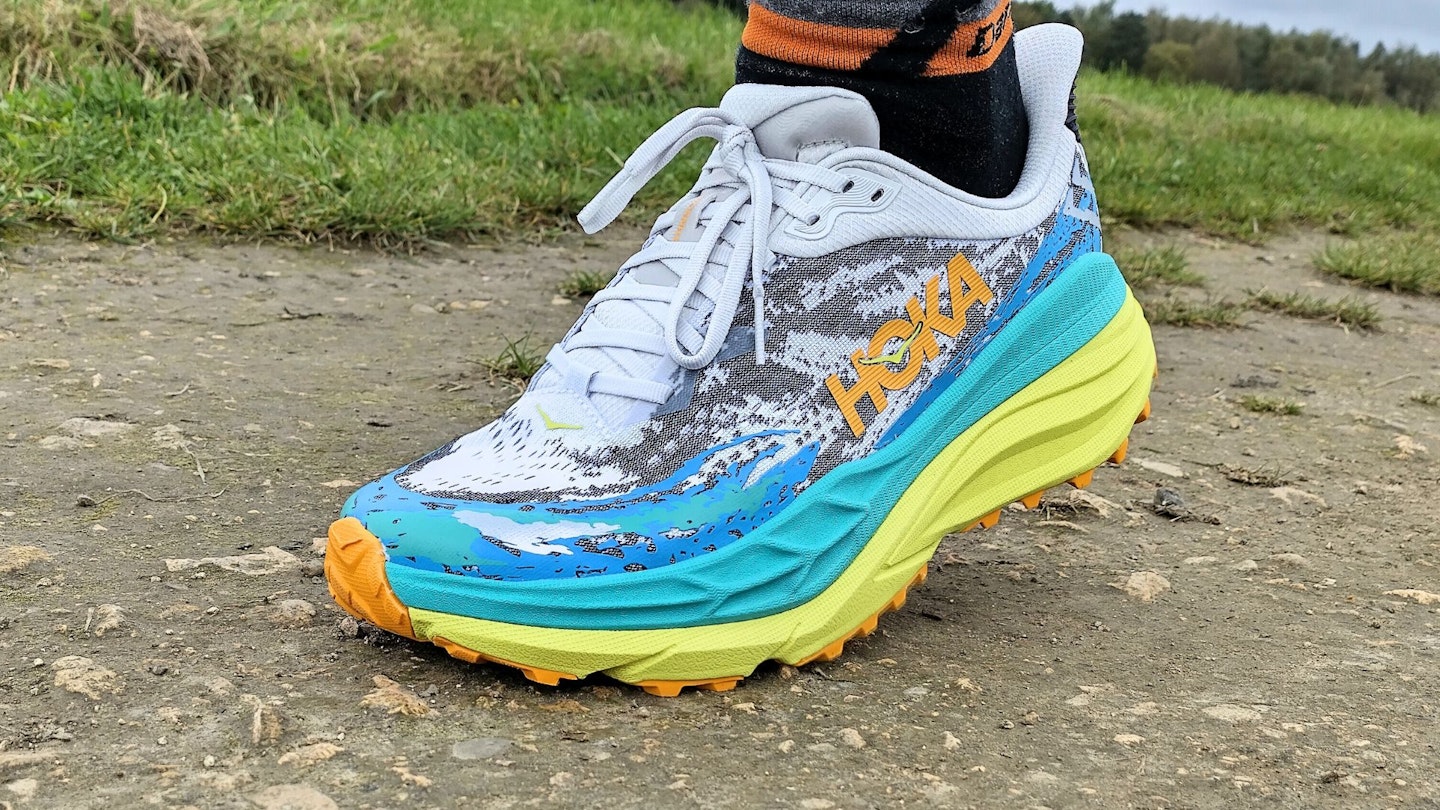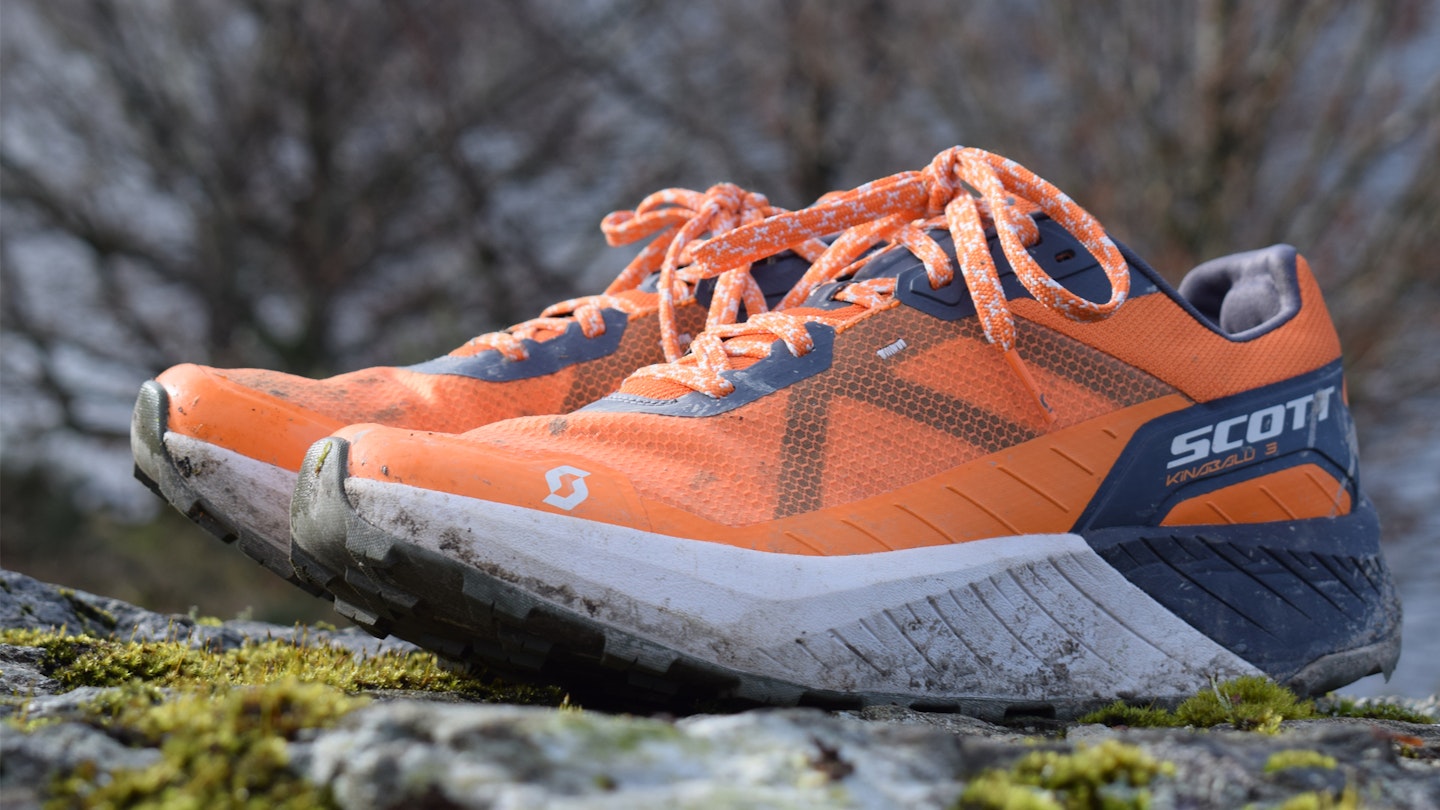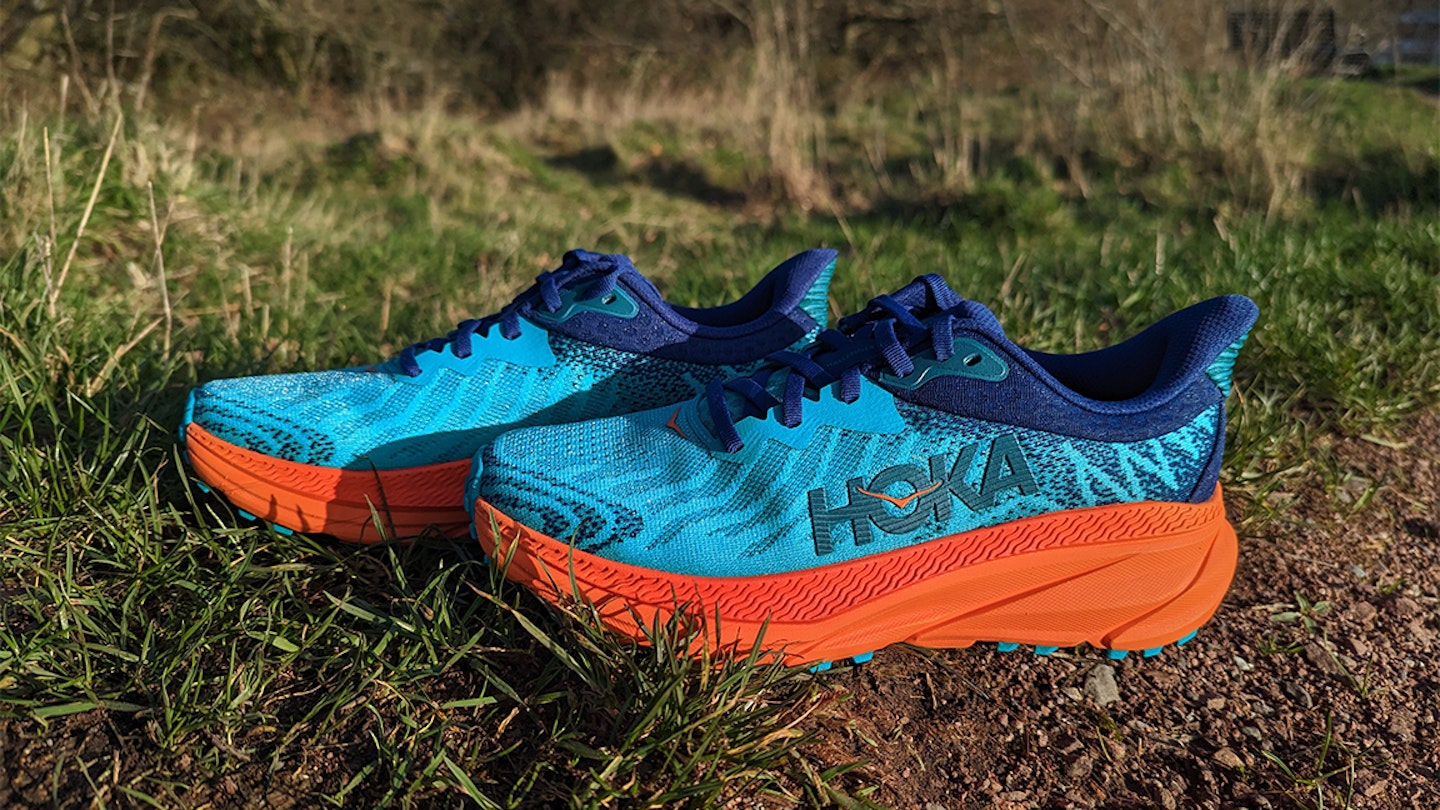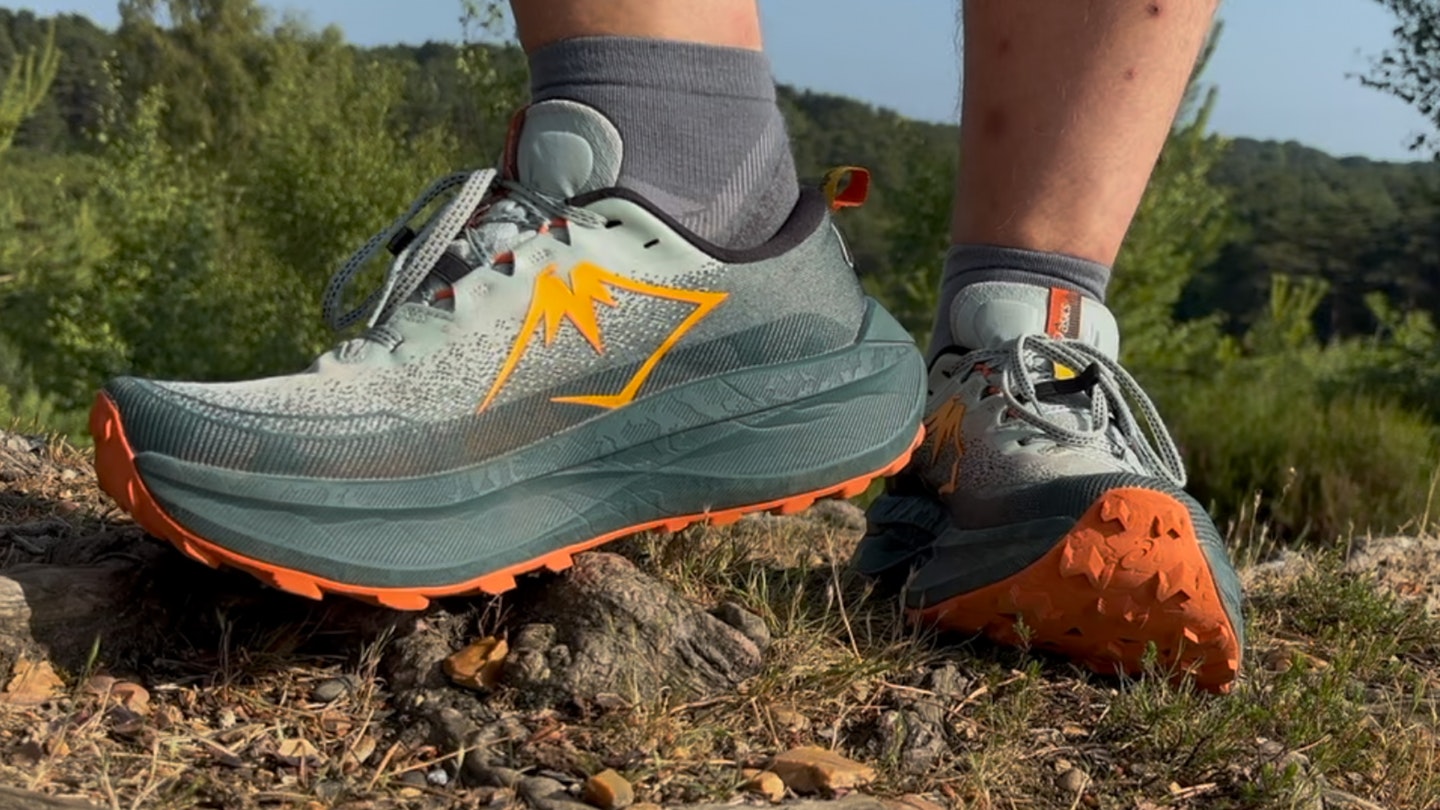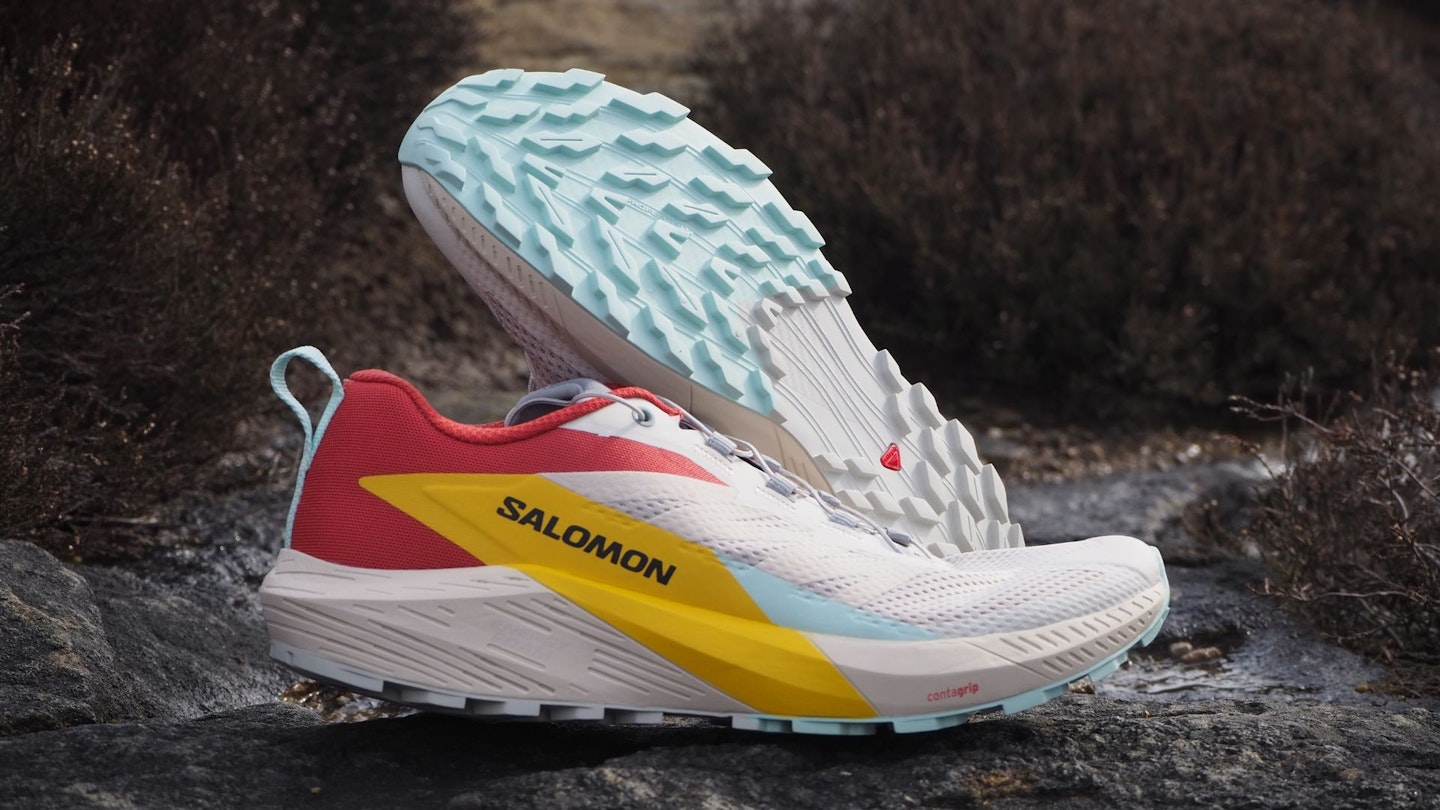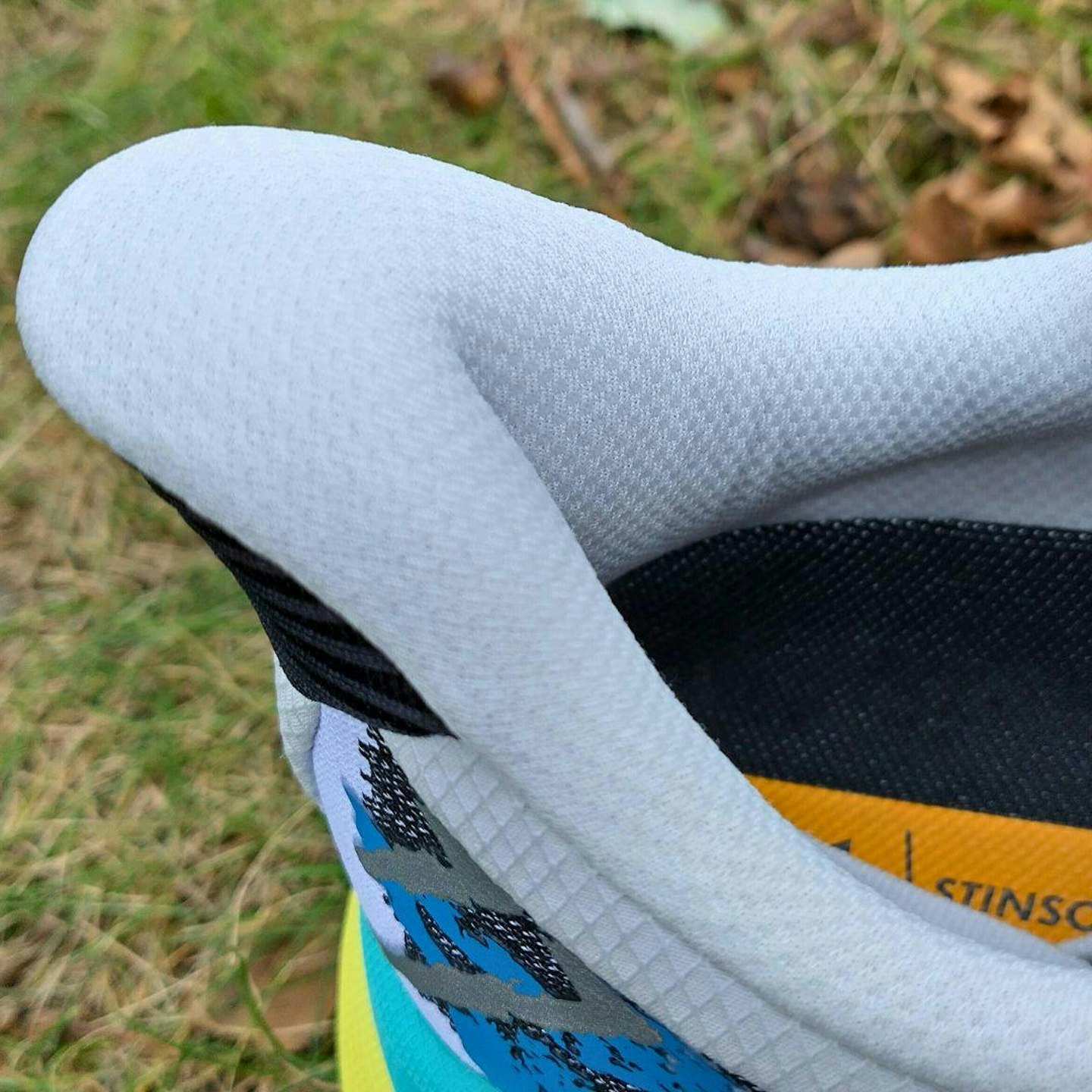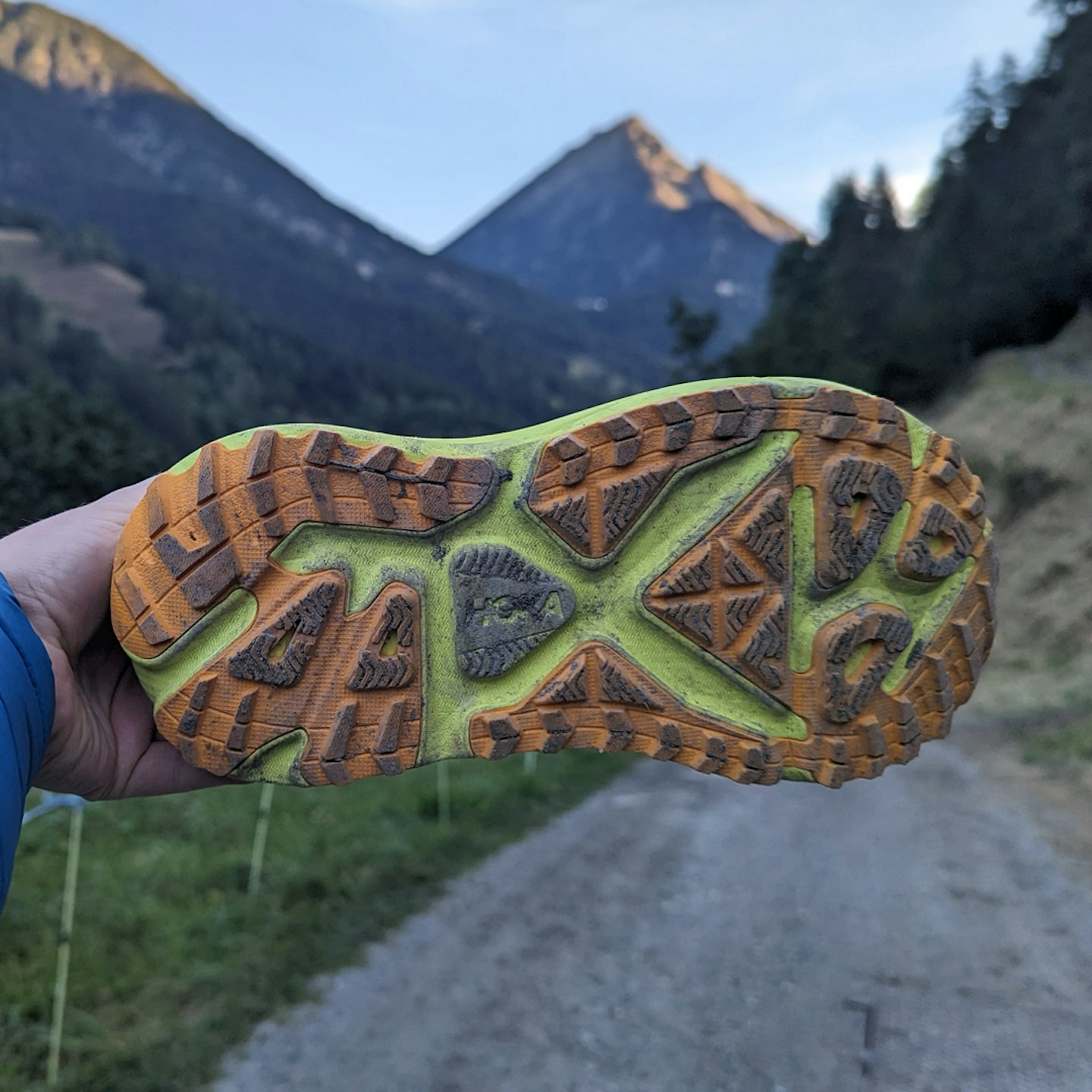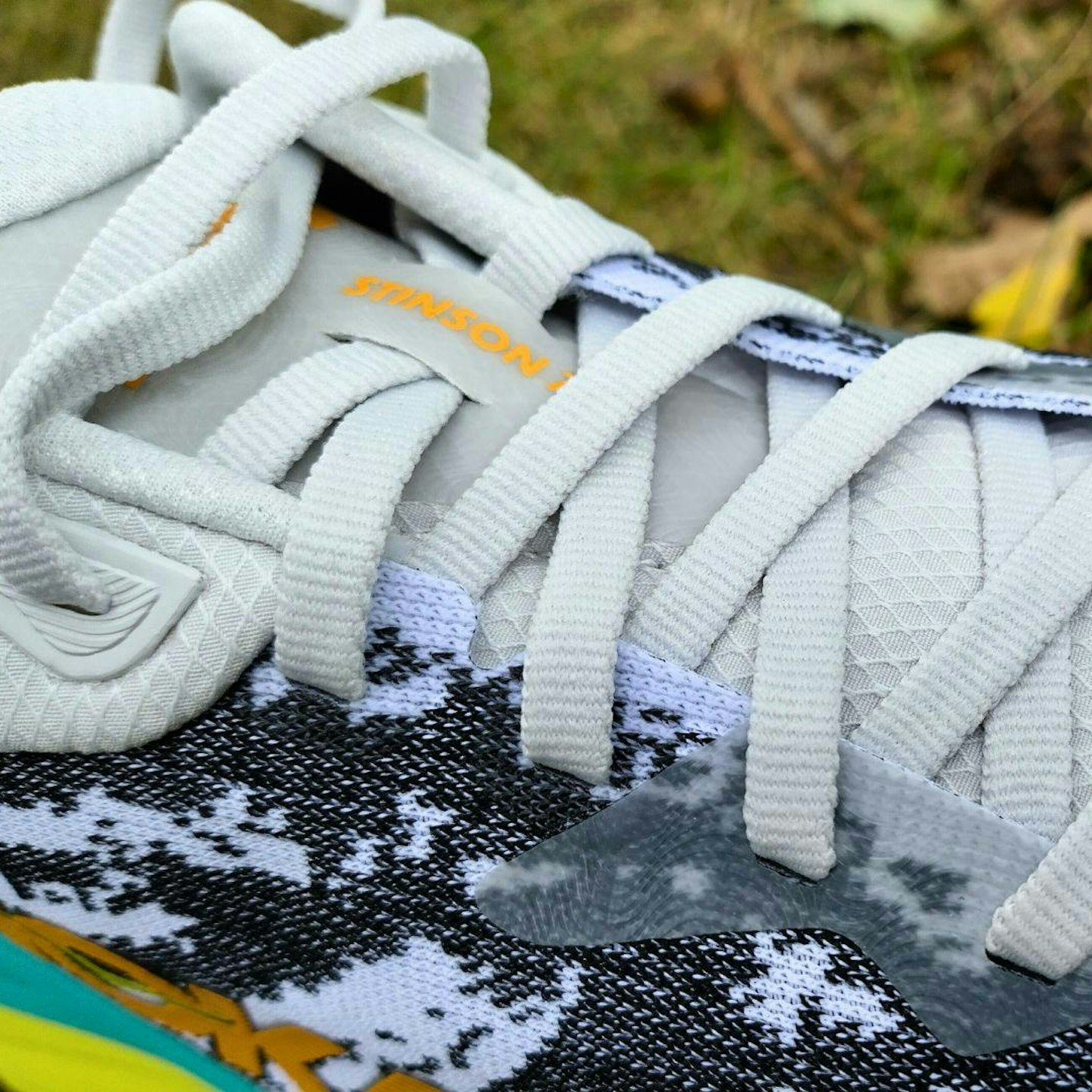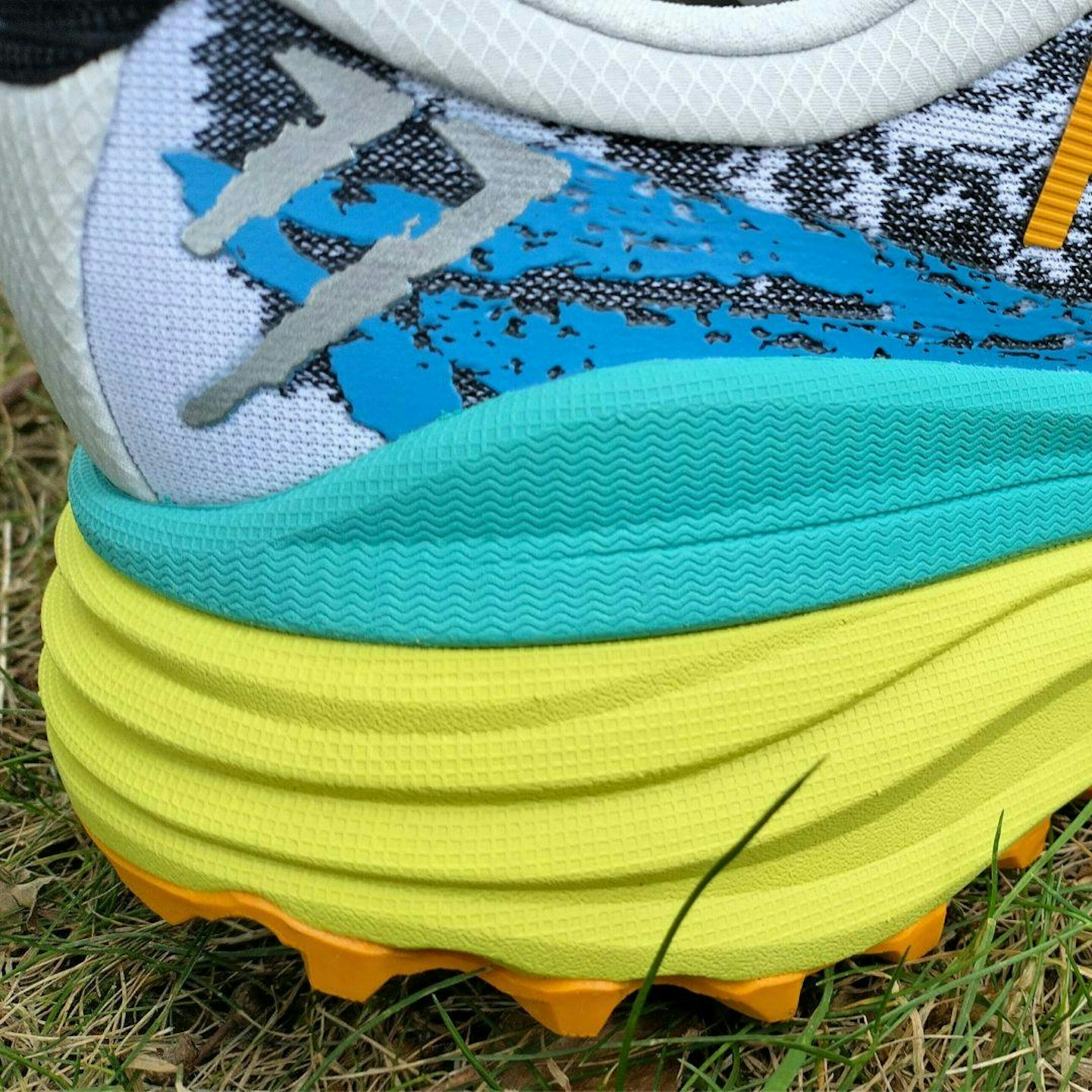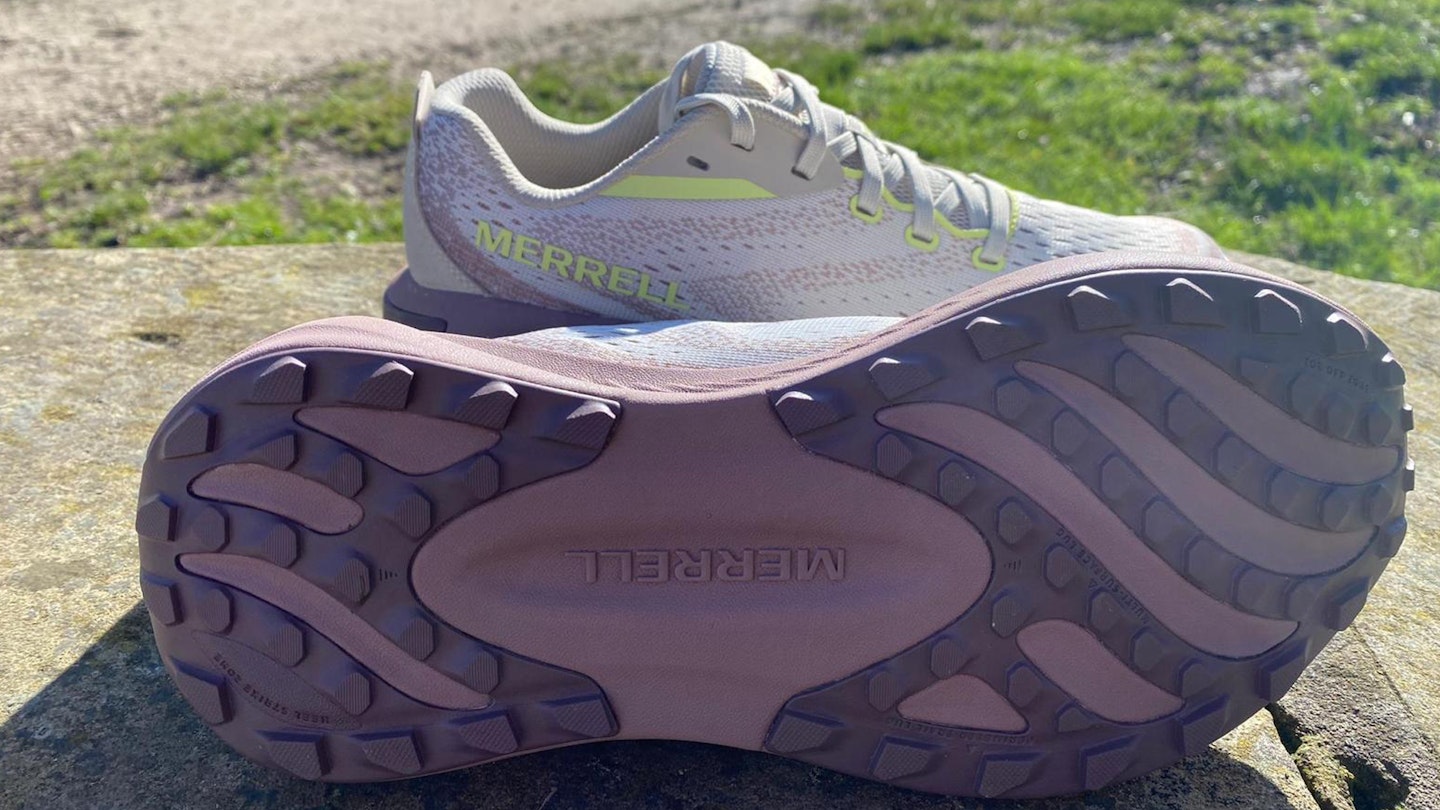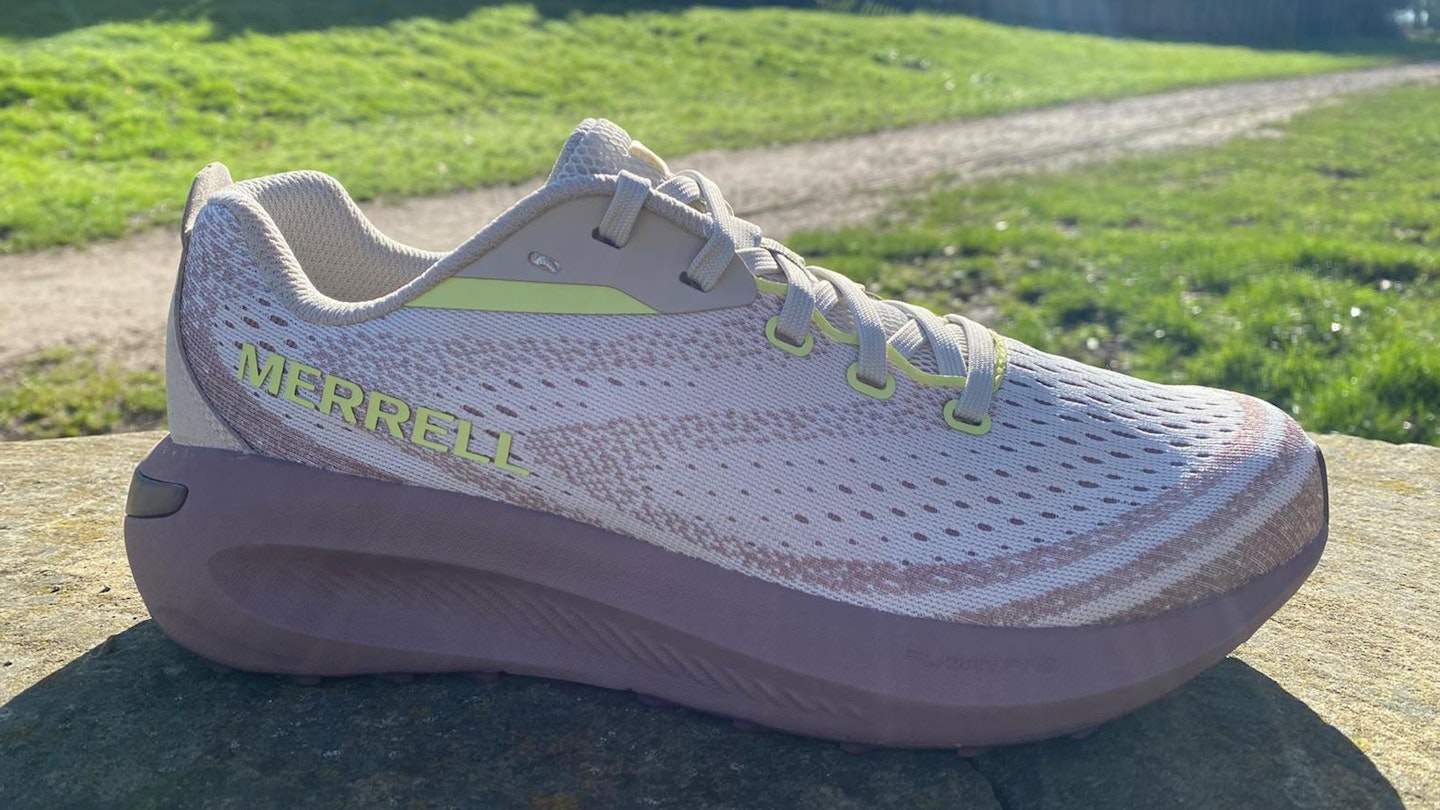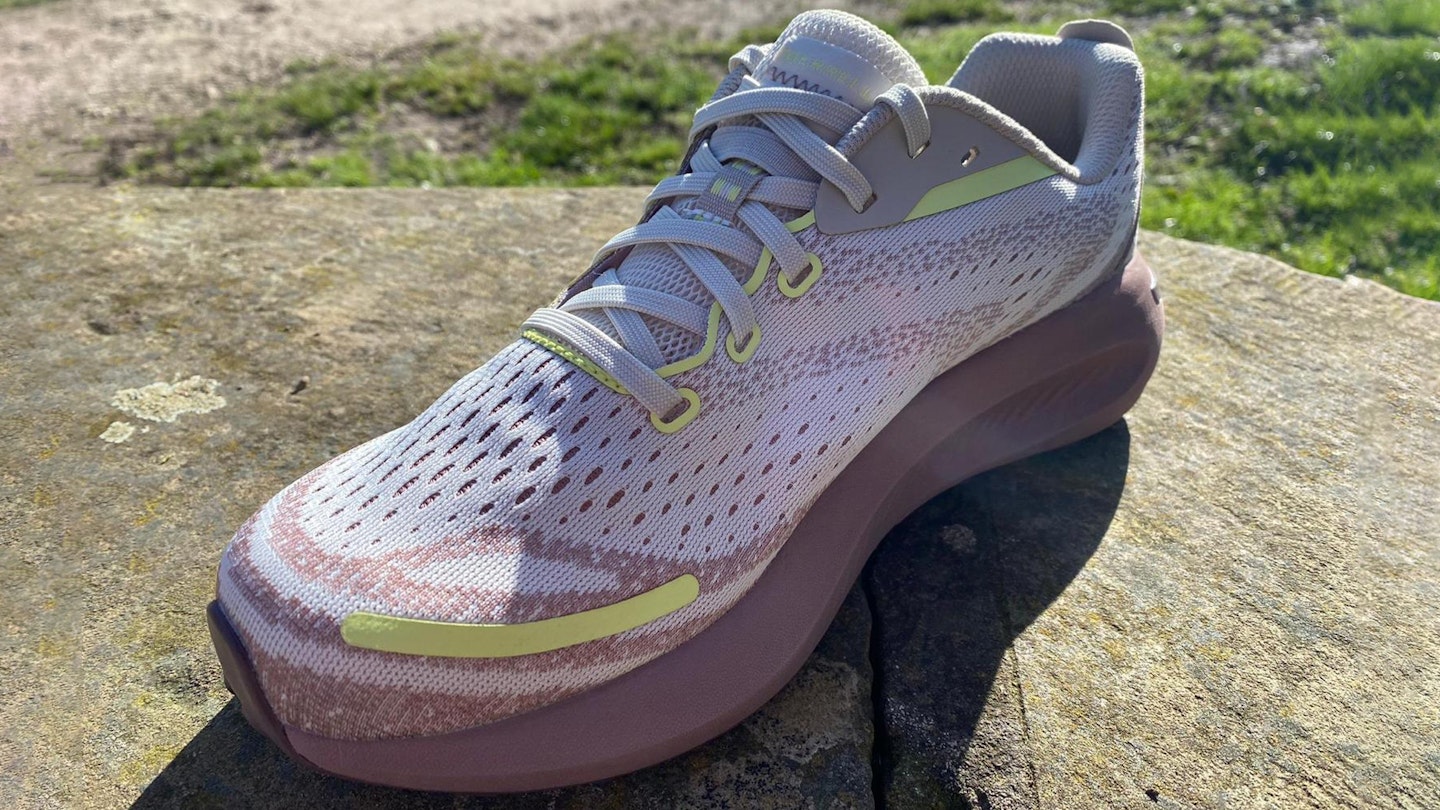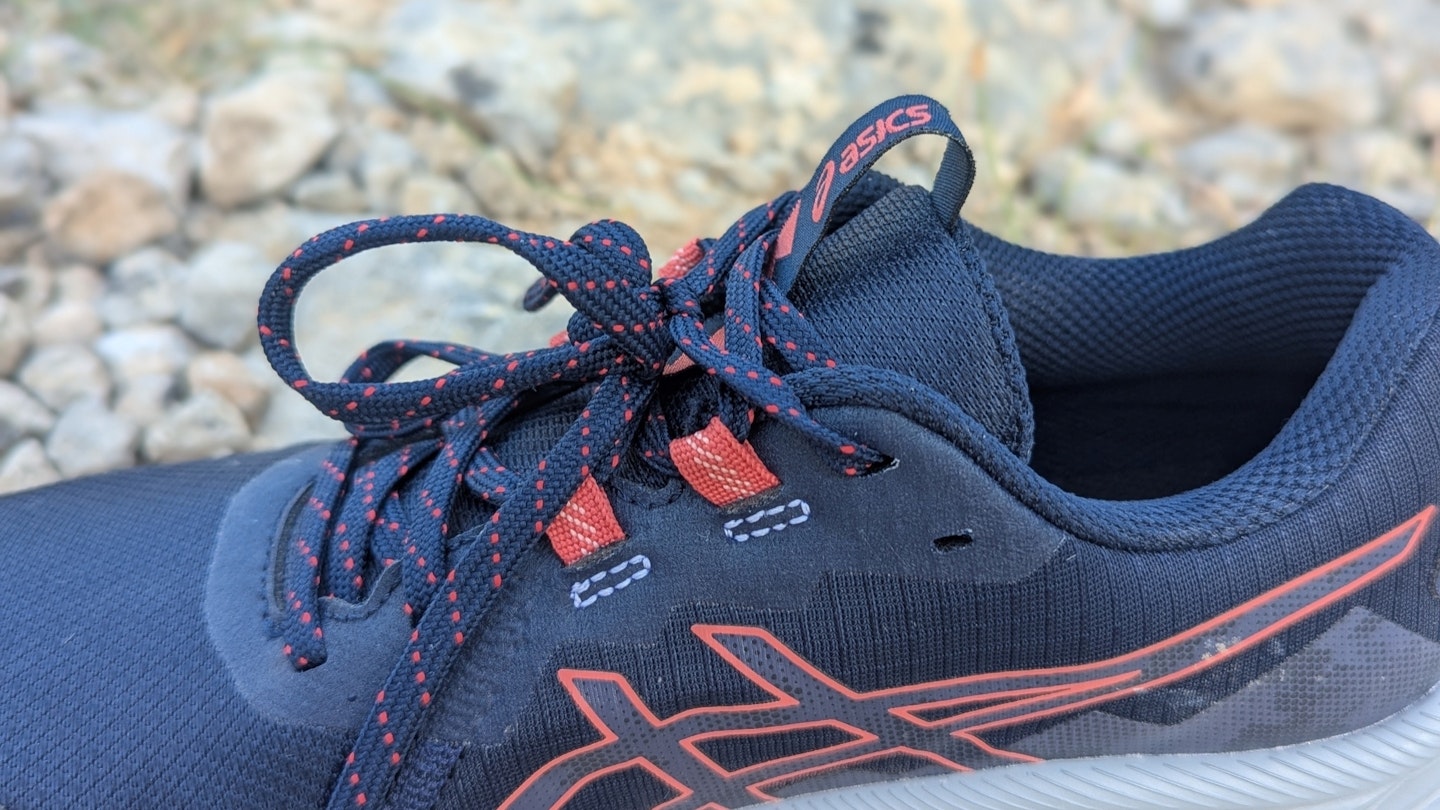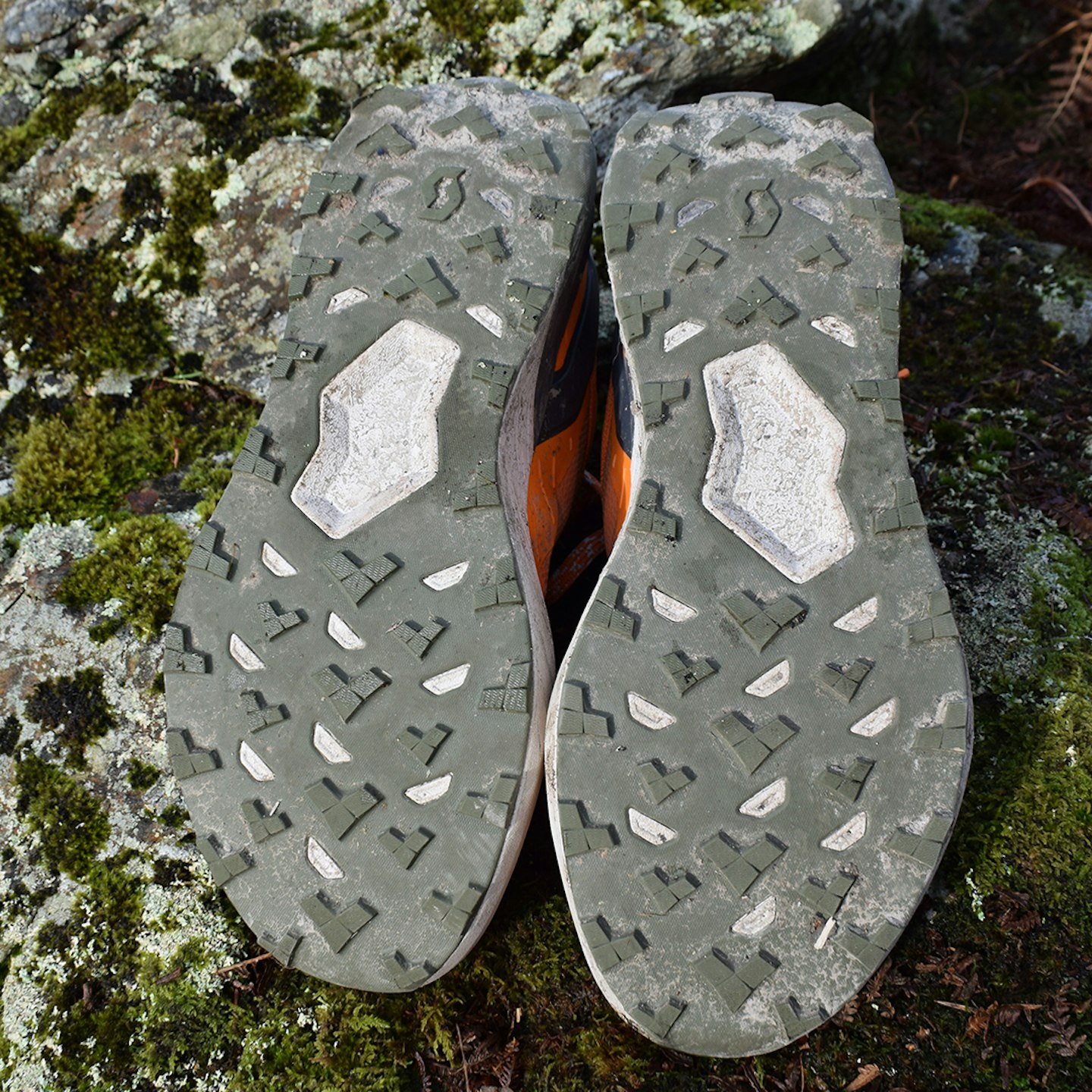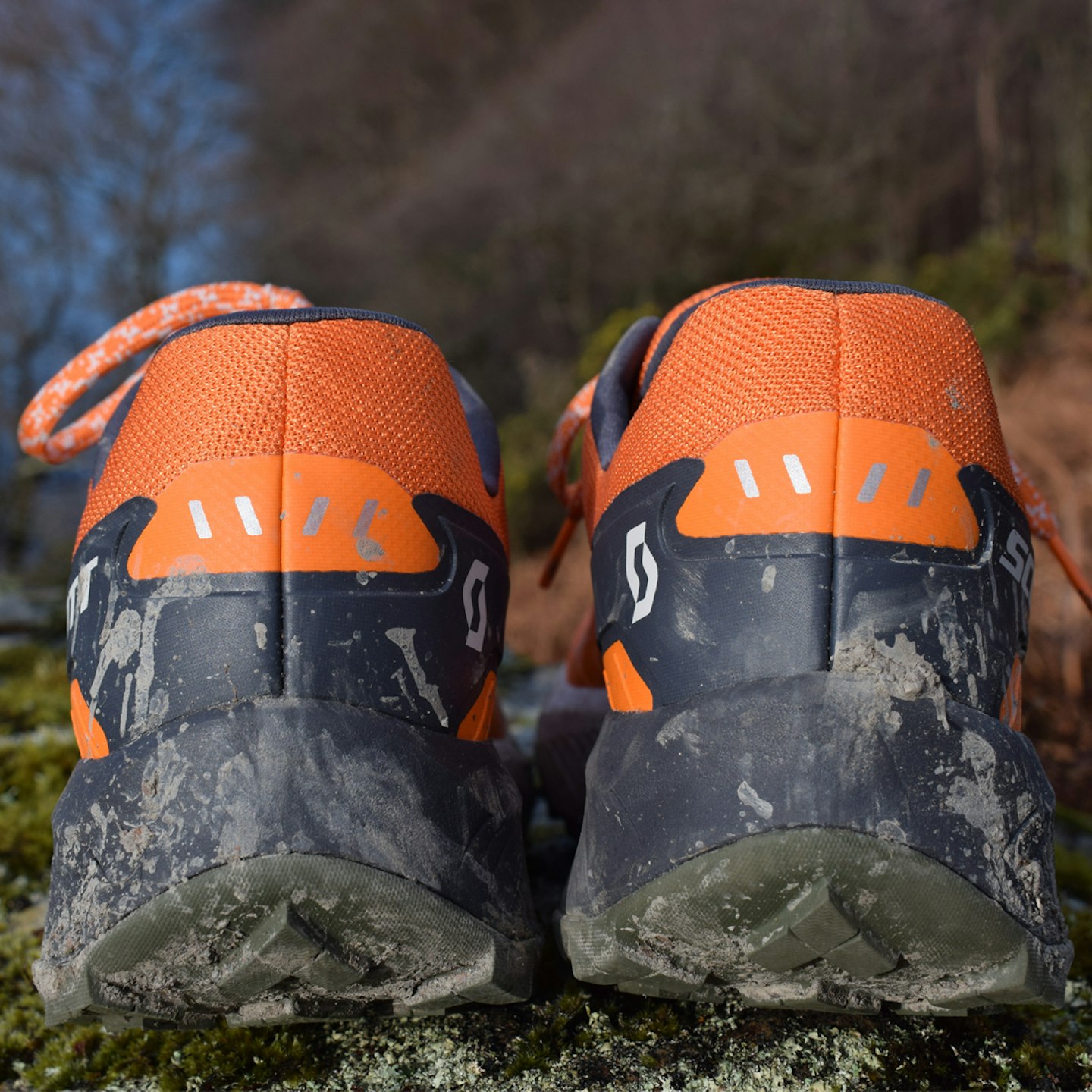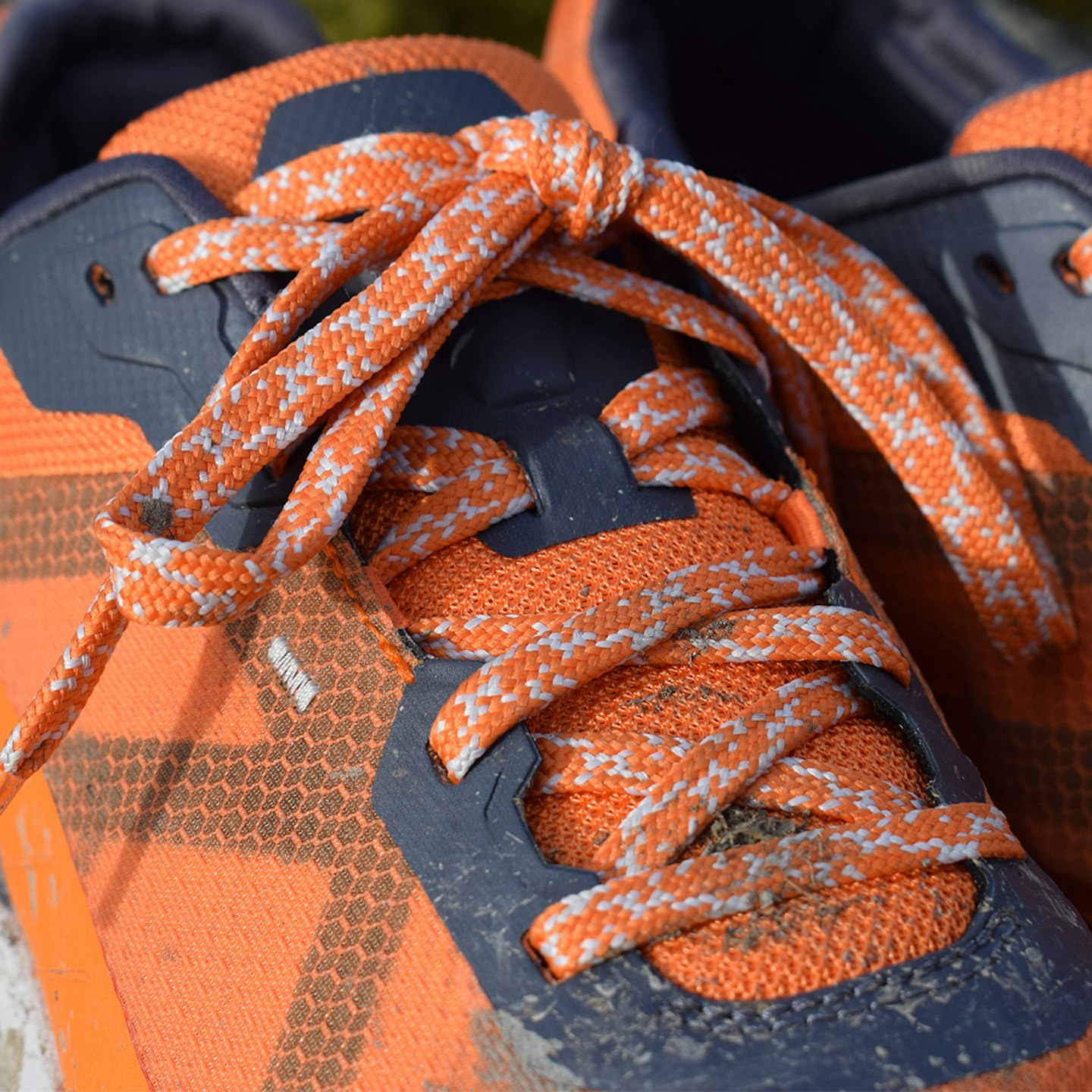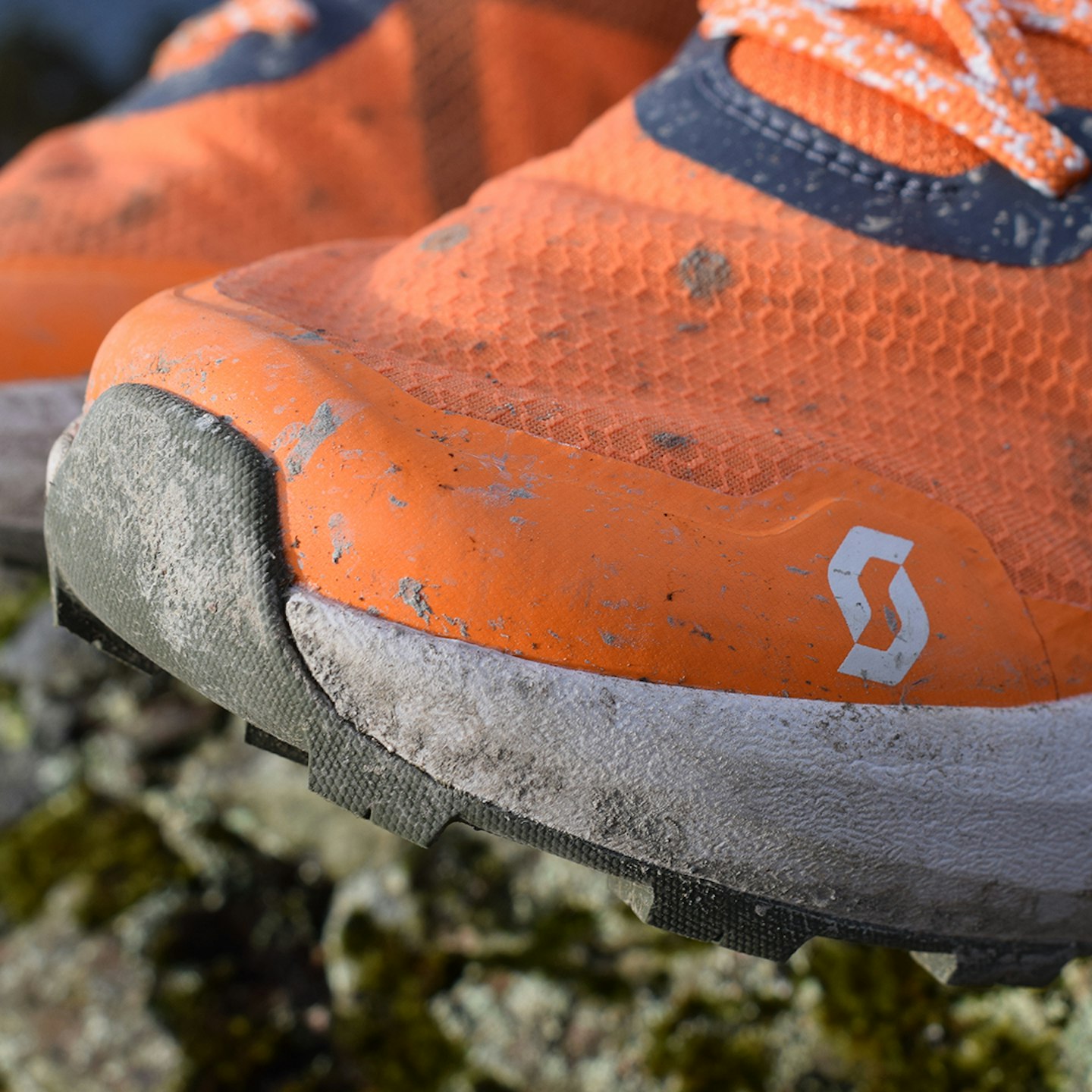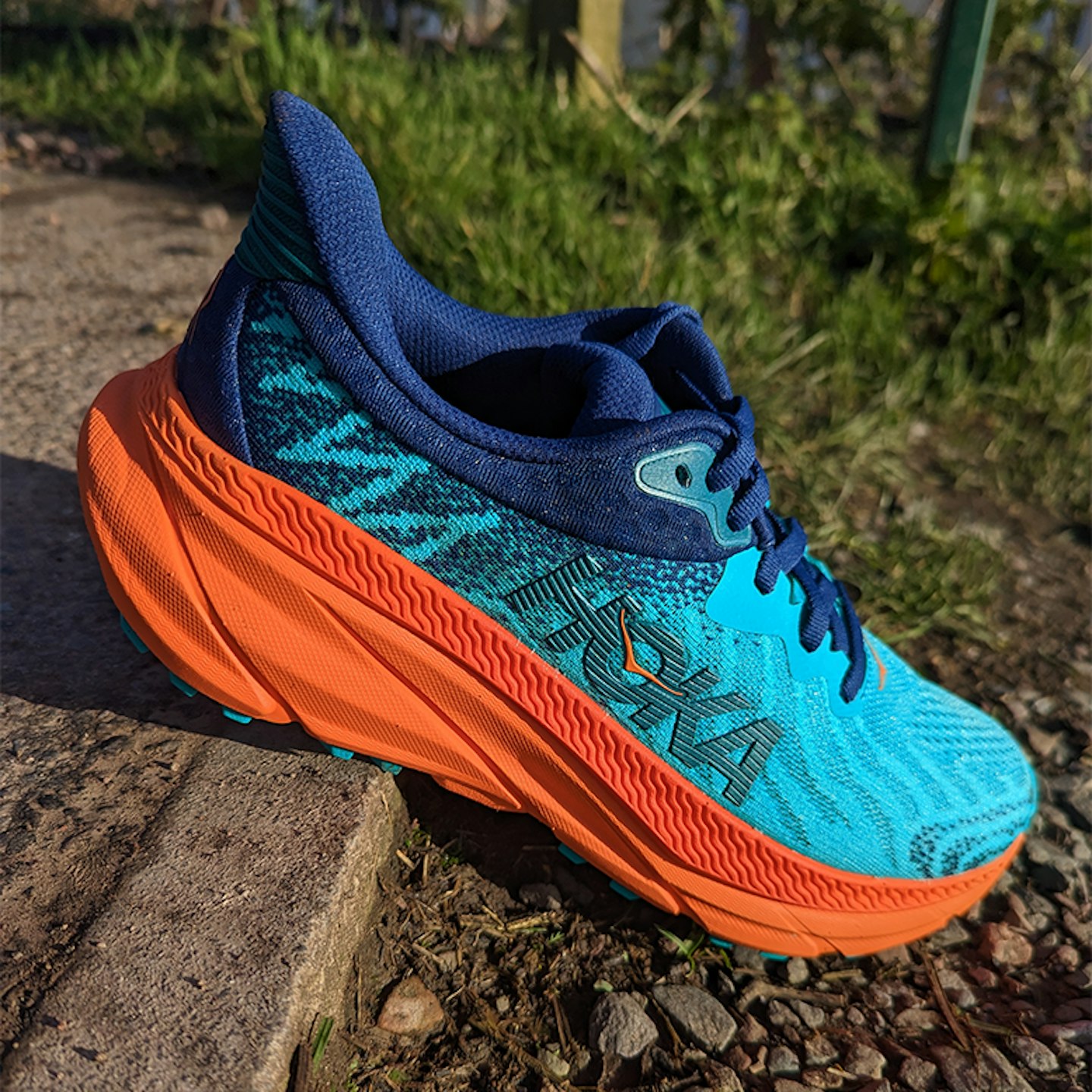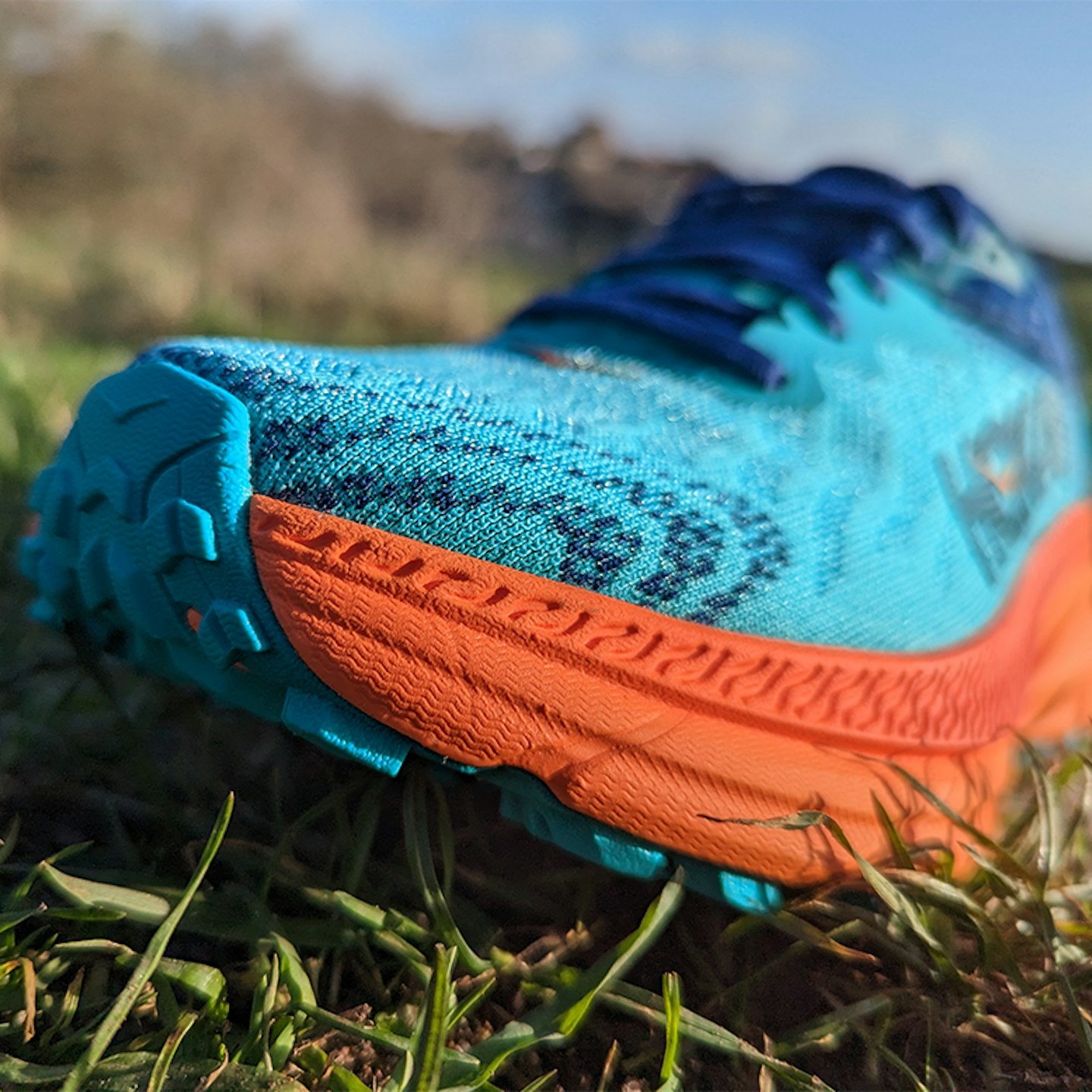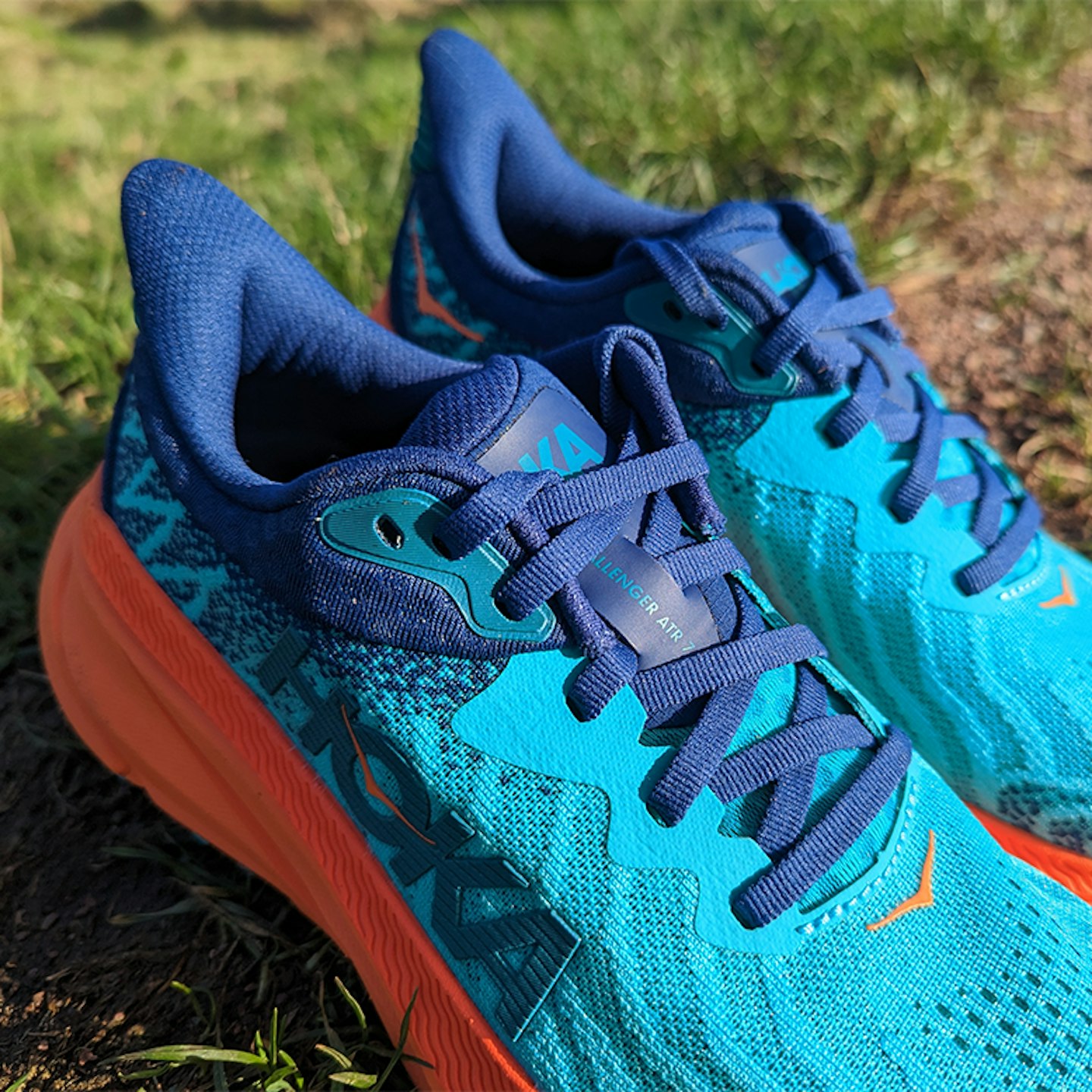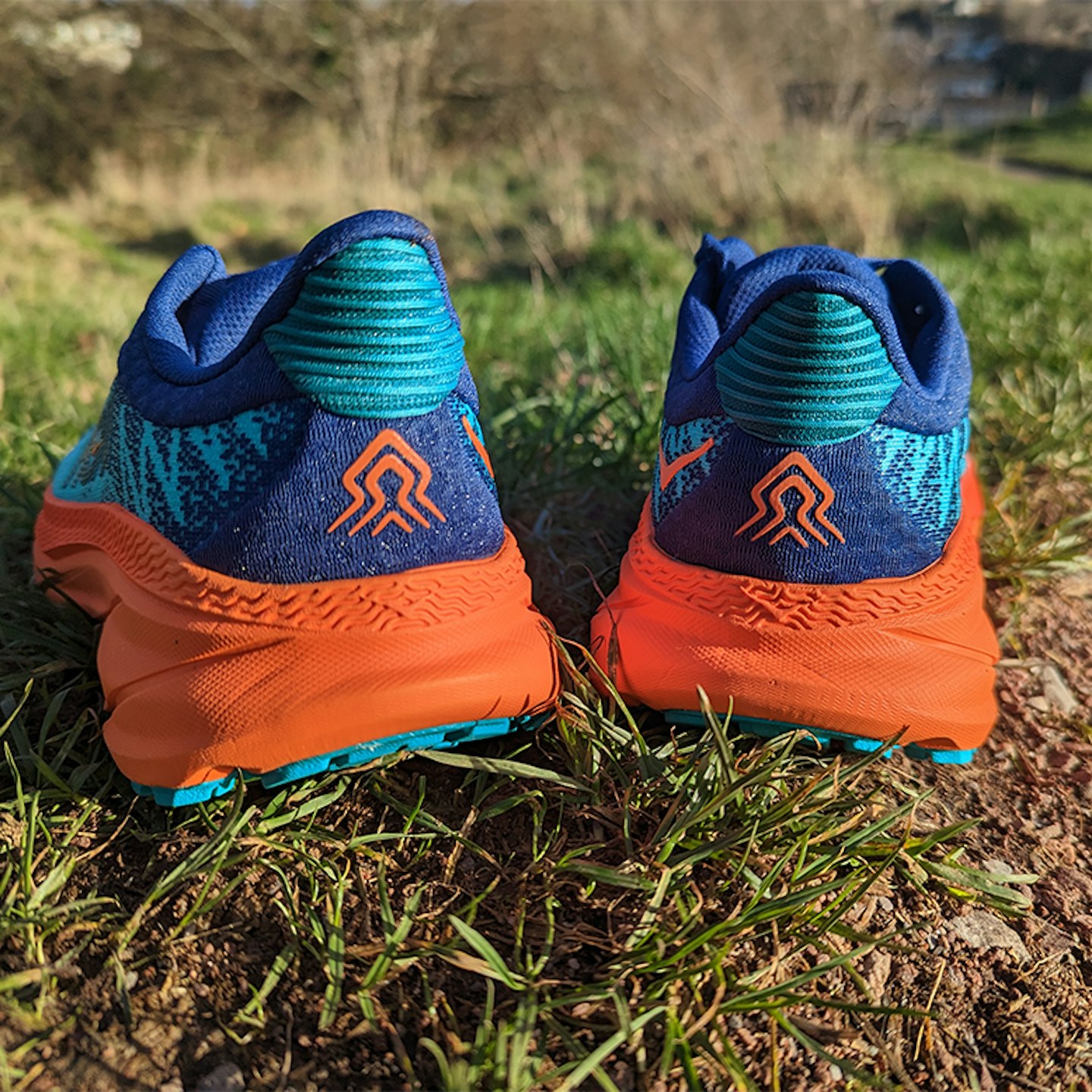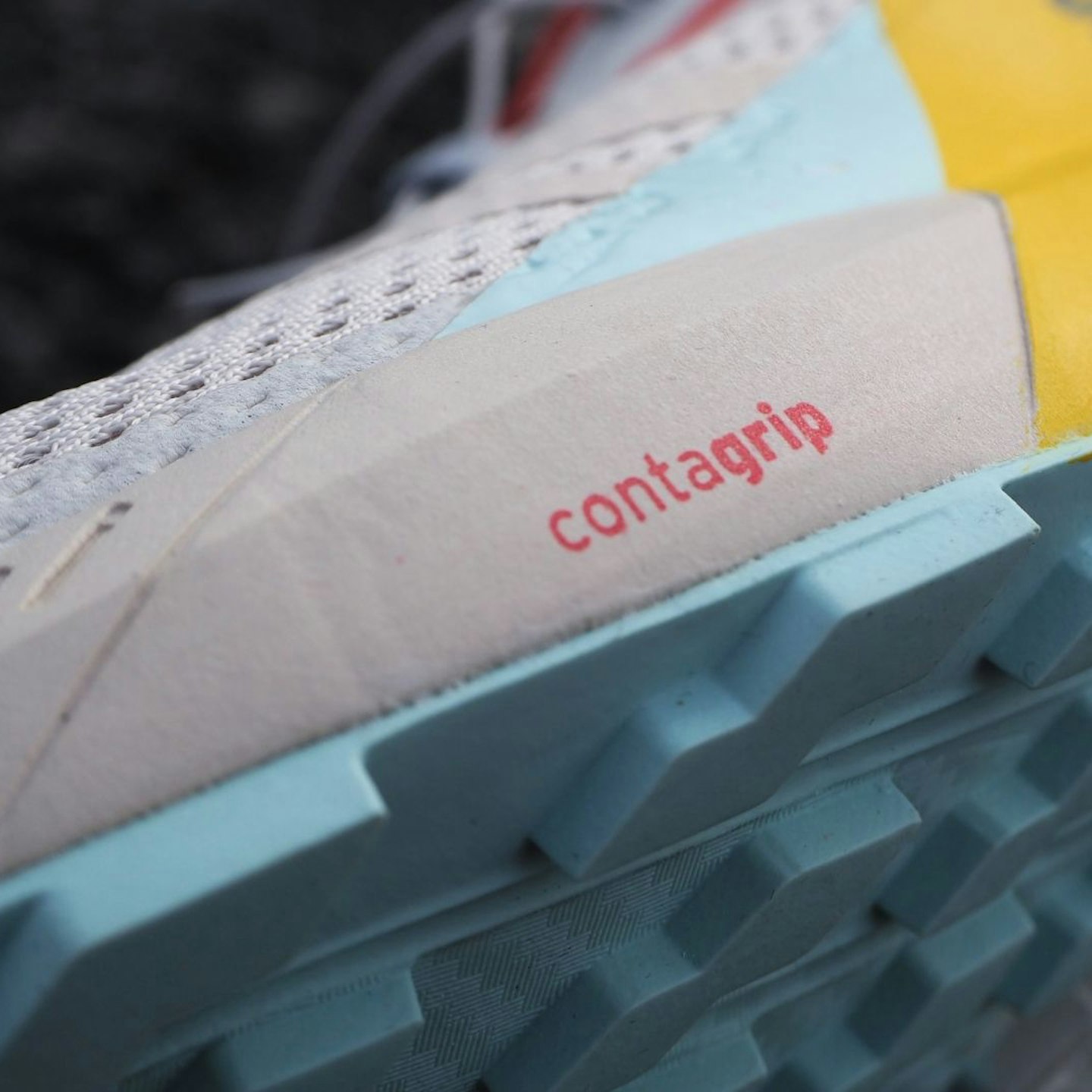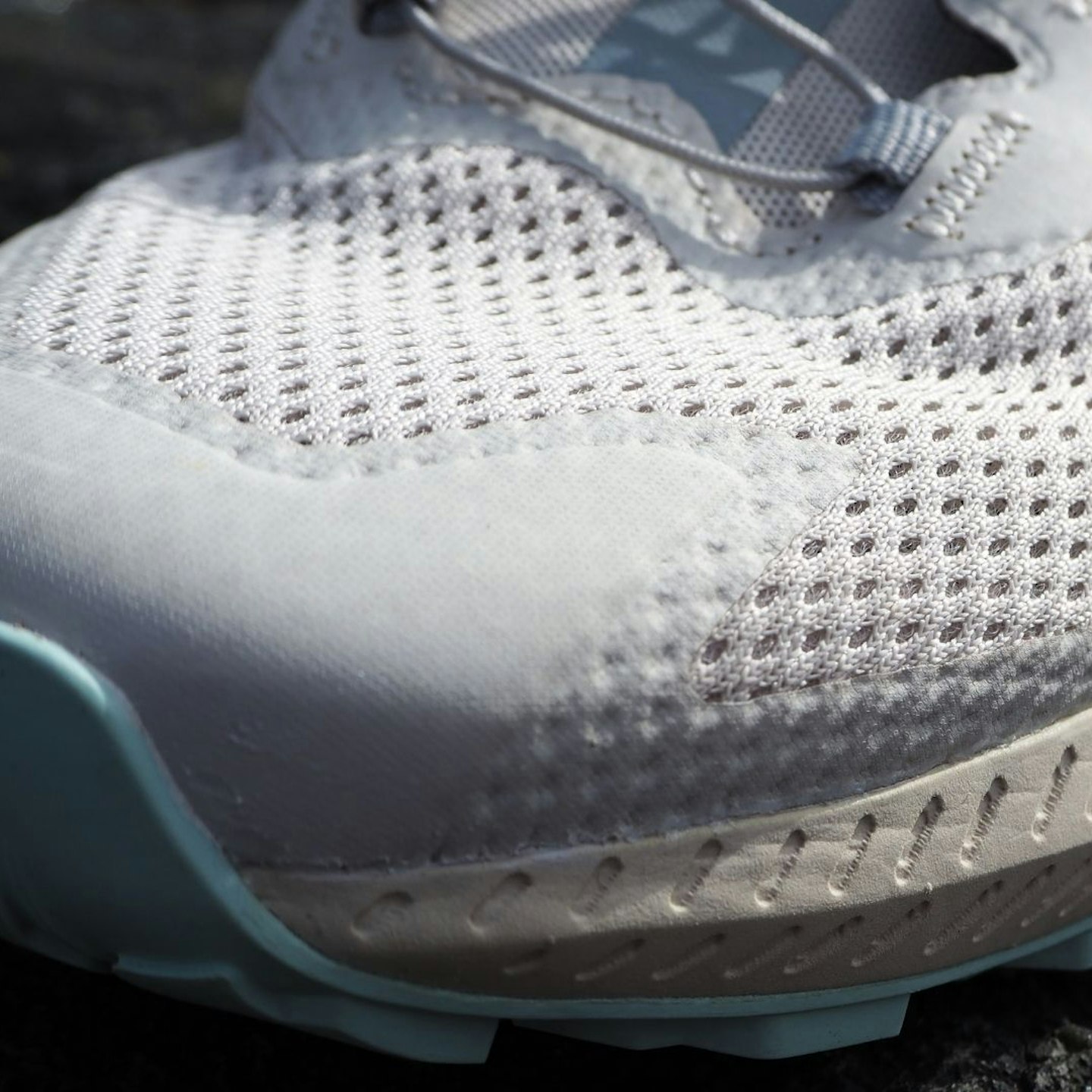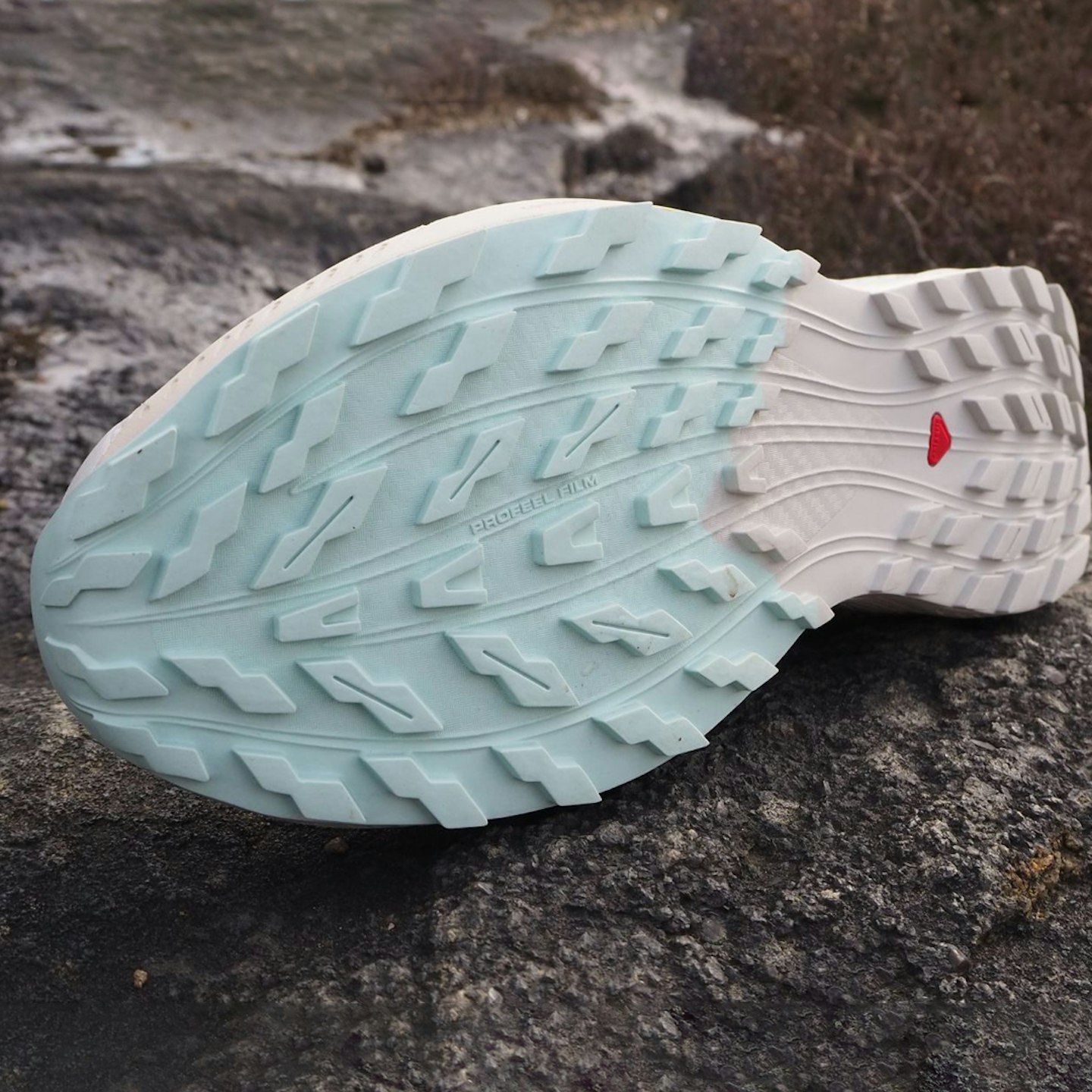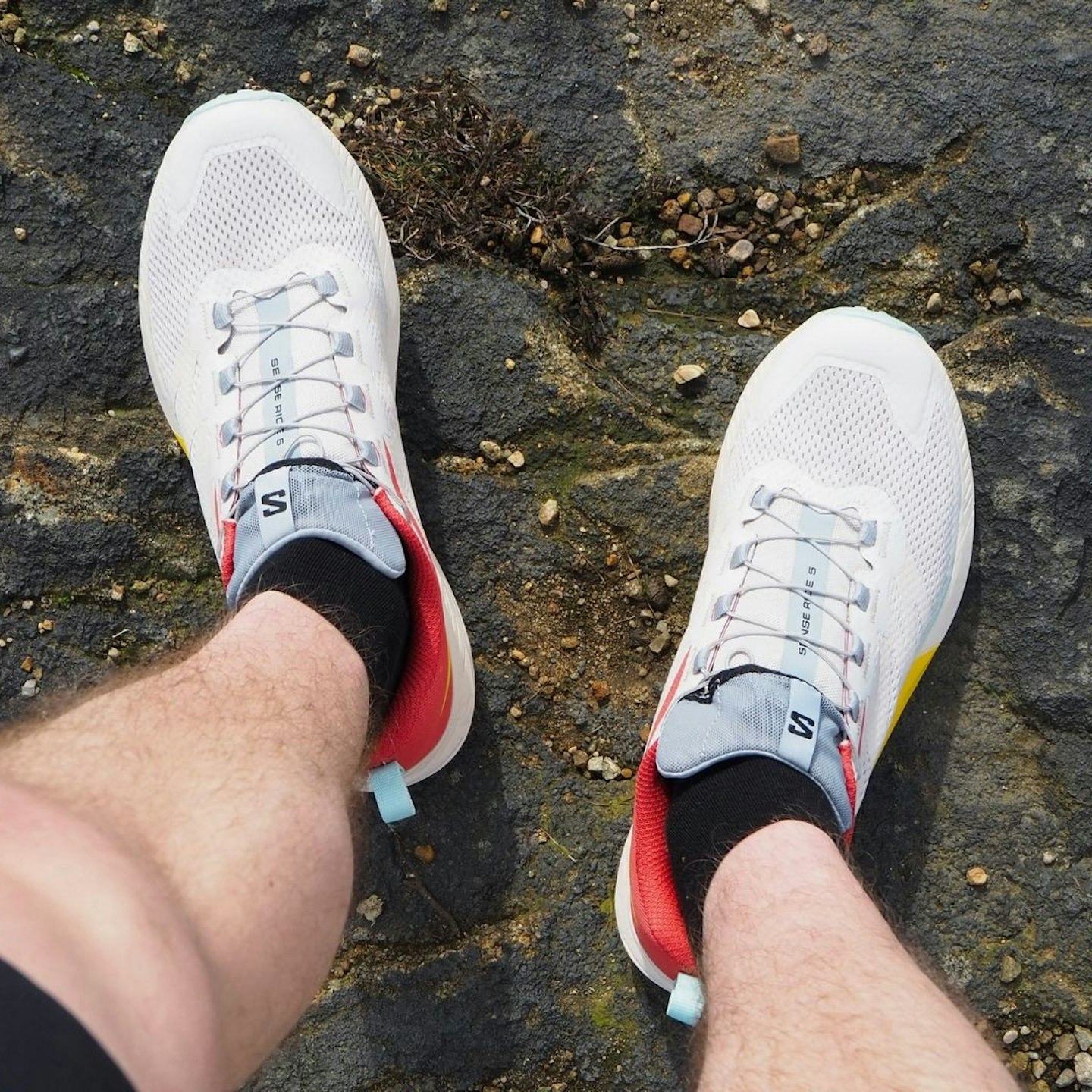Of all the sub-categories of trail running shoes, these are the most versatile option for the majority of runners. While many of us wish we could run on nothing but soft woodland trails or mountain rocks, chances are you're gonna hit some road on your way to the good stuff.
Road to trail running shoes require a range of features; you’ll need cushioning for the road, but you’ll also need high-traction grip, rock protection, and a lot of durability. A true road shoe might be able to take on easy trails at the height of summer, but come autumn, you'll need a pair that offers some extra security in slippery conditions.
In addition to good grip, you'll also want a degree of stability to support you on uneven ground. This doesn't need to be as heavy duty as in an ultra trail running shoe, but will likely come in the form of a plastic insert in the midsole, or even a carbon fibre plate, which we'll get into in the advice section at the end of this round-up.
Best road to trail running shoes at a glance:
Best in test: Hoka Stinson 7
Best value: Merrell Morphlite
Best under $100: Asics Gel-Venture 10
Best for race day: Adidas Terrex Agravic Speed
How we test road to trail running shoes
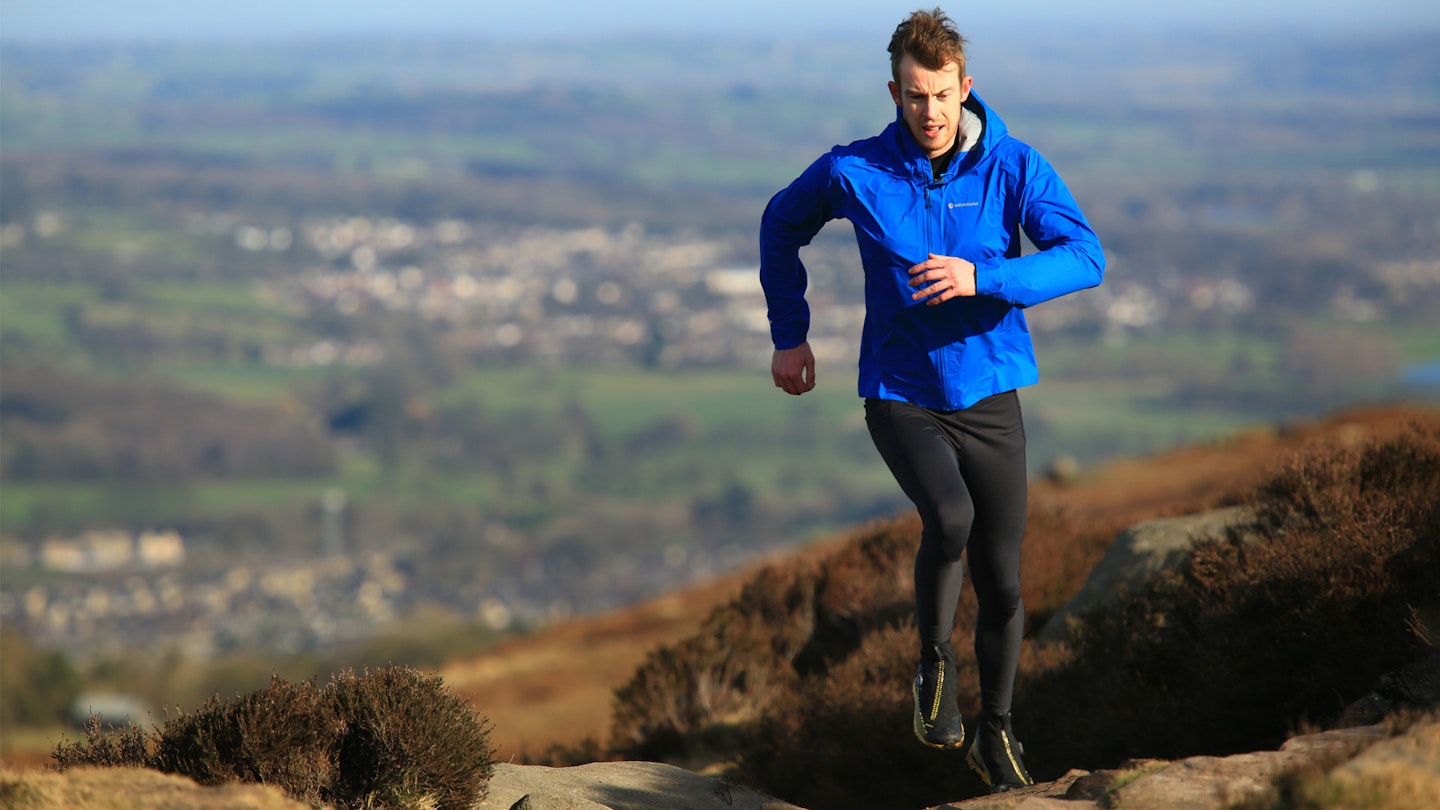
To find the best road to trail running shoes, we tested each model across the full range of terrain they’re designed to handle – from tarmac and gravel paths to dry woodland, rocky byways and (where possible) a bit of mud.
We looked for grip, durability, and how confidently each shoe transitions between surfaces. That means testing traction, ground feel, and underfoot protection, while also considering road-friendly ride quality and responsiveness.
Of course, since hard (and evil) roads are involved, cushioning is key, so that's what we looked for before anything else. But we also paid close attention to weight, stability, fit and drop. A versatile road to trail running shoe should feel smooth on pavement without becoming sloppy on more uneven terrain.
For more, here's a full breakdown of how we test gear at LFTO.
Let's address the elephant in the room – this list contains quite a few Hoka shoes. This isn't for any sponsor-y or shady reason, Hoka are just really good at producing soft, high-cushioning, high-traction running shoes.
Still, we've also included plenty of top performers from other trail brands like Asics and Adidas, who are especially good for loyal road runners looking to transition from road to trail running.
Best road to trail running shoes in detail:
The Stinson 7 is, in typical Hoka fashion, the exact opposite of a sleek, minimalist running shoe. It features a thick EVA midsole with a towering 42mm/37mm stack height (40mm/35mm in the women's version).
We wore worried this would affect the stability of shoe, but Hoka have compensated by giving the Stinson 7 an extra wide platform.
Between the width and height of this sole unit, of course the Stinson 7 is outrageously comfortable. We'd even call it pillowy. The midsole features a design touch called Metarocker which aids heel-to-toe transitions, which works nicely with the huge amounts of cushioning to create a seamless flow when you're running.
Of course, this only lasts until things get hairy on the trail. Weighing 365g (men's 10) and sporting that wide outsole makes the Stinson 7 a tad clompy, which is great for long distances, but does come at the cost of agility. We wouldn't pick it for skyrunning.
That said, the Durabrasion rubber outsole performed pretty well across a range of terrains. It features 4mm lugs and wide mud channels which did their job on wetter outings. We've seen this sole before on the Hoka Challenger 7, and we were impressed then as well. Being able to handle damp grass is critical, and we were pleased to find that the Stinson 7 could hold its own all throughout the Yorkshire moors.
It may not be the best for tricky terrain, but if you're hitting more typical UK trails and looking for comfort and stability, then this shoe is the ticket.
Read our Hoka Stinson 7 review review or find the women's version here
Pros
- Sumptuous cushioning
- Stable
- Vegan
- Decent grip
- Versatile
Cons
- Big stack height not for everyone
- Look a bit clumpy
| RRP: | $139 |
| Women's sizes: | 3.5 - 9.5 |
| Men's sizes: | 6.5 - 14.5 |
| Weight (men's 10): | 12.8oz/365g |
| Drop: | 5mm |
| Stack height: | 42mm/37mm |
| Lugs: | 4mm |
The Merrell Morphlite is a solid option for new trail runners seeking an affordable hybrid shoe that transitions well between road and trail. Over a month of testing on Surrey’s muddy trails and woodland paths, the Morphlite impressed with its excellent grip and breathability, performing well during quick changes in direction and on mixed surfaces.
At just 215g per shoe, the Morphlite feels light and bouncy, but this comes at the cost of comfort. Its firm FloatPro Foam midsole lacks the cushioning needed for longer runs, causing discomfort over sharp terrain or extended distances. The shoe’s flat profile also promotes overpronation, making it less suitable for runners with ankle or tendon vulnerabilities.
The outsole features a mix of 3mm perimeter lugs and 2mm multi-surface lugs, striking a balance between road and trail traction. While not fully waterproof, the double-lined toe box and splashproof upper offer a decent defence against wet conditions.
Sustainability-conscious runners will appreciate the use of recycled materials, including 100% recycled laces and mesh components, though this shoe doesn’t fall under Merrell’s dedicated eco-friendly range.
If you’re starting out on trails or sticking to shorter distances, the Morphlite delivers value and reliable grip at an accessible price point. For those eyeing longer or more technical runs, a more cushioned option might be worth considering.
Read our Merrell Morphlite review or find the women's version here
Pros
- Sole transfers well from road to trail
- Splashproof upper
- Good breathability
- Great grip when changing direction
- Excellent value
Cons
- Flat footed style encourages overpronation
- Padding doesn't stack up well on sharp terrain
| RRP: | $110 |
| Women's sizes (UK) | 4–9 |
| Men's sizes (UK) | 7–14 |
| Weight (UK size 6.5) | 7.6oz/215g per shoe |
| Drop | 6.5mm |
| Stack height | 26.5mm – 20.0mm |
| Lugs | 3mm (perimeter) 2mm (multi-surface) |
| Waterproof version | No |
If you’re looking for a do-it-all hybrid at a wallet-friendly price, the Gel-Venture 10 is hard to beat. At just £70, it’s an absolute bargain, offering a surprisingly smooth ride on the road and enough trail grip to handle dry, hard-packed paths and rocky tracks.
It’s not the lightest or flashiest shoe on test, but it punches well above its weight in comfort, support and versatility.
The AMPLIFOAM midsole, paired with Asics’ signature GEL cushioning in the heel, gives a soft yet stable feel underfoot, particularly suited to heel strikers and runners who underpronate. The 10mm drop, firm foam and structured heel all work together to support higher arches and absorb shock on repetitive road miles.
Up top, the padded mesh upper may look old-school, but it proved breathable in 30°C+ conditions and gave a locked-in fit with zero foot slide or rubbing. There’s no gusseted tongue, but the fit is dialled-in enough to keep dust and debris out.
The 2.5mm arrow lugs on the outsole provide just enough traction for light trail use, though they’re likely to struggle in wet or muddy conditions.
For shorter runs up to 20km, the Gel-Venture 10 is an excellent choice – especially if you’re new to trail or just want something you can wear door-to-trail without blowing the budget. Durability is yet to be proven long-term, but early signs are good.
Read our Asics Gel-Venture 10 review or find the women's version here
Pros
- Excellent value for money
- Comfortable and well-fitting
- Performs on both road and light trail
- A stable shoe for neutral to underpronators
Cons
- Grip can be limited
- The 10mm drop won’t suit everyone
| RRP: | $79.99 |
| Weight: | 9.67oz/274g (women's UK5.5) |
| Waterproof version? | Yes |
| Stack height: | N/A |
| Drop: | 10mm |
| Lugs: | 2.5mm |
| Women's sizes: | UK 5-10 |
| Men's sizes: | UK 6-14 |
New for 2025 in its third generation, the Scott Kinabalu 3 is back again with a “full re-design” and “improved comfort, protection and running efficiency”, according to the Swiss brand. We quickly found this description to be bang on – the Kinabalu 3 feels much more agile and cushioned than its predecessor.
The upper uses a tried and tested design, with soft and lightweight ripstop mesh covering the forefoot and top of the toe, and a sturdier thermoplastic polyerethane reinforcing the heel, toe, and sides. We noticed some decent flex in the polymer, with a fairly standard fit that feels locked in on the top but still accommodates your usual swell and splay.
The big highlight on the Kinabalu 3 is the midsole cushioning and rocker shape, which feels nicely springy and energetic, especially for a trail shoe that looks, at first glance, a bit chunky. The midsole is fairly thick, providing a comfortable and plush feel, and ultimately making us pleasantly surprised by how fast our test runs ended up being.
This is partially thanks to the rocker shape of the midsole which increases efficiency and gets you into a good flow on the trail. We were also quite impressed with the materials underfoot, which are all proprietary. Scott's 'Kinetic Foam' comprises the midsole and was notably light and responsive – Scott claim the material "provides 14% more energy than standard EVA".
Meanwhile, the proprietary outsole leans into this smooth flowing approach with 3.5mm chevron-shaped lugs. It's not a very aggressive pattern or depth, but similar to the North Face Vectiv Pro, it excels when you're wanting to move fast over hard packed paths in the hills or woodlands.
We tested this shoe on a mixture of trails in the Lake District, and while they certainly aren't fell running shoes, the Kinabalu 3 is an excellent pick for mixed terrain, including the odd pavement which, let's face it, we can't all avoid.
Read our Scott Kinabalu 3 review or find the women's version here
Pros
- Excellent midsole
- Good cushioning
- Light
- Comfortable ride
Cons
- Not the most aggressive outsole
| RRP: | $150 |
| Women's sizes: | 3-8.5 |
| Men's sizes: | 6-13 |
| Versions: | GTX, non-GTX |
| Drop: | 7mm |
| Stack height: | 29.5mm heel, 22.5mm forefoot |
| Lugs: | 3.5mm |
| Weight (men's 8): | 11.5oz/327g per shoe |
The Adidas Terrex Agravic Speed trail running shoes stand out for their exceptional breathability, lightness, and responsiveness. Designed for fast-paced trail races, they feature a synthetic upper with seamless overlays that provide comfort and agility. However, their breathability comes at the cost of water resistance, making them less ideal for wet conditions. They dry quickly, but frequent wet runs may call for a more waterproof option.
The midsole combines Lightstrike and Lightstrike Pro foams, delivering a cushioned yet responsive feel that absorbs impact and boosts energy efficiency. The shoe's rocker-like structure promotes forward momentum, making it excellent for straight-line running on relatively even trails. However, the lack of lateral support can be a drawback on uneven terrain or during directional changes.
The Terrex Agravic Speed's Continental rubber soles with 3mm lugs offer good traction on most surfaces, though they perform best in dry or mildly wet conditions. The lugs' design favors linear movement, aligning with the shoe's overall purpose. Despite their strengths, the shoes can be uncomfortable on slopes due to minimal padding around the ankles.
Other notable features include textured laces that stay tied and a lightweight asymmetric tongue that enhances comfort. The shoes are incredibly light and responsive, making them ideal for runners seeking a swift, energetic experience. Overall, the Adidas Terrex Agravic Speed excels in providing a fast, enjoyable run on suitable trails, though it may not be the best choice for very uneven or consistently wet terrain.
**Read our Adidas Terrex Agravic Speed review or find the women's version here
**
We've also just reviewed the GTX Version!
Pros
- Lightweight
- Great breathability
- Excellent responsiveness and propulsion
- Inexplicably cool looking laces
Cons
- Not much lateral support
| RRP: | $120 |
| Weight: | 8.46oz/240g |
| Women's sizes: | 5.5-14.5 |
| Men's sizes: | 5.5-14.5 |
NEW DROP

The Nike Zegama 2 stands out for its impressive cushioning, featuring a squishy ZoomX midsole that offers a comfortable and springy feel. As well as comfort, the shoe's high stack provides excellent energy return, and we enjoyed taking it for bouncy and fast test runs.
At first, seeing such a high stack, we did worry about the Zegama 2's stability. However, the midsole's slightly curved edges add a lot of security and and provides a wide landing platform, so the shoe doesn't feel like an ankle breaker at all.
The Vibram Megagrip outsole is a significant upgrade from the original Zegama, providing reliable traction with 4mm lugs arranged for optimal grip. It performs well on both wet and dry surfaces, sticking firmly to wet rocks and shedding mud efficiently. We also found that the outsole's flexibility helped with getting some good ground feel.
The upper is made of a thin, ventilated mesh that ensures excellent breathability. Key features include an internal heel counter for stability, a thin overlay at the toe for protection, a small ankle gaiter to keep out debris, and a padded U-shaped section that cradles the rear foot. The Zegama has all the bells and whistles, but it manages to do so without being overly flashy or having an obnoxiously high stack.
In all, the Zegama 2 is supremely comfortable and it's relatively short lugs provided much more traction than we were expecting. It performs excellently on road and trail, so we say grab it if you want a good all-rounder for summer.
Read our full Nike Zegama 2 review or find the women's version here
Pros
- Excellent cushioning
- Great grip on slick surfaces
- Durable reinforcement around pressure points
- Good flex in the midsole
Cons
- Extended heel won't be to everyone's taste
| RRP: | $190 |
| Weight: | 11.2oz/320g |
| Women's sizes: | 5-8 |
| Men's sizes: | 7-12 |
| Drop: | 4mm |
| Lugs: | 3mm |
The Hoka Challenger 7 is a boldly designed, plush road to trail running shoe with the typical Hoka flare. The Challenger 7 is ideal for runners who are after a shoe that'll provide both comfort over hard surfaces and traction over non-technical off-road terrain.
Compared to its predecessor, the Challenger 7 features a redesigned midsole with increased cushioning, yet at a lower weight. Plus, there's a Gore-Tex version for winter running.
The shoe's midsole is made of soft compression-molded EVA foam with an increased stack height, providing ample impact absorption. The Durabrasion rubber outsole has 4mm lugs which fare well over grass, shallow mud and gravel trails.
The Challenger 7's engineered mesh upper has been redesigned to be more breathable than the 6, with ventilation points at the centre of the foot which help to avoid getting overly sweaty while running. It's easy to slide the shoes on via the exaggerated heel tab, with the padded heel collar helping to lock in the foot when running.
While not the most agile option, the Challenger 7 are best suited to training runs when you want to be comfortable and supported. They're best suited to medium-distance runs, offering a good balance between road and trail performance.
Read our Hoka Challenger 7 review or find the women's version here
Pros
- Cushioned and comfy
- Thick midsole for impact absorption
- Tack both road and non-technical trail
Cons
- Not grippy in thick mud
- Heavier than some
| RRP: | $145 |
| Weight (size 5): | 7.68oz/218g |
| Men's sizes: | 7-13.5 |
| Women's sizes: | 3.5-10.5 |
| Drop: | 5mm |
| Stack height: | 31mm/26mm |
| Lugs: | 4mm |
Few shoes walk the line between cushioning and structure as confidently as the Asics Trabuco Max 4. It keeps the plush, protective ride that road-to-trail runners love about the Trabuco Max series, while firming things up with a more stabilised platform and slightly lowered stack height.
You don’t get much ground feel, but you do get smooth transitions, strong heel-to-toe flow, and an impressively locked-in fit. we love the upper – the jacquard mesh is much softer and more breathable than the previous version we tried (read our Trabuco Max 3 review).
Although it’s not as tough as ripstop or Matryx alternatives, the structure holds together well thanks to a TPU perimeter overlay and thick ankle padding. The heel and collar feel especially plush, creating a snug, secure fit right out of the box.
Underfoot, the FF Blast+ Eco midsole feels firmer than before, but still protects your feet on sharp or uneven trails. The new M-shaped lugs on the ASICSGRIP outsole add subtle traction improvements and help deliver that smooth, rolling ride on woodland paths and hard-packed ground.
It isn't a bargain, but the Trabuco Max 4's combination of long-distance comfort, consistent performance and subtle eco upgrades (including a bio-based midsole) help justify the price. It definitely deserves top spot for road-to-trail.
Read our Asics Trabuco Max 4 review or find the women's version here
Pros
- Excellent cushioning in midsole
- Versatile lug pattern
- Stiffer midsole is better for different running styles
- Smooth rocker geometry
Cons
- Lacks proprioception
- Upper fabric isn't as durable as other options
| RRP: | $160 |
| Weight (Men's 9): | 11.25oz/315g |
| Stack height: | 41mm heel; 36mm forefoot |
| Drop: | 5mm |
| Lugs: | 4mm |
| Upper: | Jacquard-woven mesh with TPU perimeter overlays |
| Midsole: | FF Blast+ Eco (includes bio-based content ~24%) |
| Outsole: | ASICSGRIP rubber |
The Salomon Sense Ride 5 is designed to be a lightweight, versatile trail running shoe for mixed trails. Salomon claims the Sense 5 is equally competent over short and ultra distances.
With a lug pattern clearly angled towards hard-packed trails and at 3.5mm, these shoes really maximise grip over firmer ground thanks to the Contragrip sole. This makes them ideal for occasional stints on the road. They're also agile, managing to remain surprisingly lightweight despite the comfort provided.
For those with slightly narrower than average feet, the Sense 5 feels blissfully comfortable in use. The generous heel arch hugs and supports the foot, while the padded heel nicely locks you in place to avoid slippage during descents. Despite this, there's clearly a balance being struck here between padding and agility, with the forefoot feeling firm and responsive.
Overall, the Sense 5 is a great choice for those door to hilltop runs where you need a good all-rounder trail shoe to get the job done. Sounds good to you?
Read our Salomon Sense Ride 5 review or find the women's version here
Pros
- Good value
- Great for a wide range of terrain
- Balance of cushioning and responsiveness
- Quicklace system
Cons
- Mid to narrower fit won't suit all
- Brand sustainability could be better
| Men's sizes | UK6.5 - 13.5 |
| Women's sizes | UK3.5 - 9.5 |
| Waterproof version? | Yes |
| Weight (UK8.5) | 286g |
| Drop | 8mm |
| Stack height | 29.6mm/21.3mm |
| Lugs | 3.5mm |
What to look for in a road to trail shoe
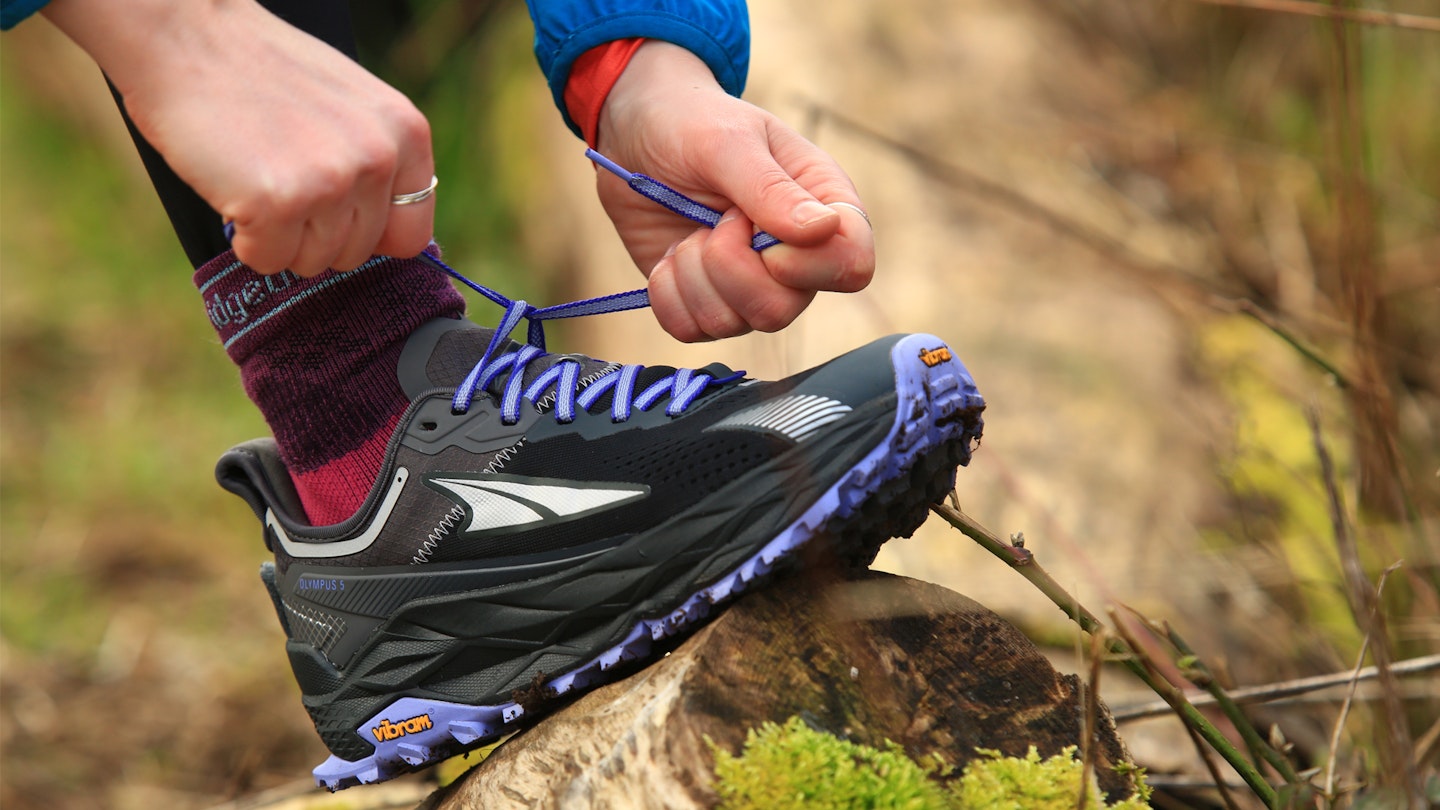
Carbon
For many of us, the road is all about running that bit quicker and there’s no argument carbon provides runners with more response harder, more uniform trails. Some will run faster, while some will benefit from the reduction in impact carbon provides. Yes, there’s a cost but it’s well worth the investment.
Breathability
In the same way you’d look for fabrics that breathe in t-shirts, go for materials that allow air and water vapour to escape from inside the shoe, while also allowing cooler air from outside to enter.
Weight
Of course, there’s no definitive weight in a running shoe as more than any other product, it’s very much individual. But, as a general rule, summer shoes are lighter and swifter feeling, so you’ll be thinking of shoes that weigh less than 300g for that rip roaring 10km PB. If you’re thinking long distance though, think about additional cushioning and therefore in some, but not all, additional weight, bringing the shoes into the mid-300s.
Toe box
The rocks will be there summer, or winter so look for protection in that department year round.
Drop
There’s almost a generational gap here. Older shoe models work off an 8mm-12mm drop for a higher, more cushioned ride while many of today’s shoes come in at around 4mm-6mm for a closer to the ground, faster feel. As with any shoe advice, it’s always about what feels good personally. In theory, it’s worth progression to lower drop shoes as they do feel quicker (half the job), but it can be at a cost for your calf muscles. There are lower drops as well with 0mm replicating barefoot. The jury is out at the moment as to what is best!
Midsole
EVA, PU, TPU or Pebax are the foams of choice for most brands. All offer softness and flexibility to different degrees.
Fit
There’s the traditional lacing system of course, but the Salomon system and the Boa fit in a variety of brands including La Sportiva and Adidas do offer superb stability on rough, steep terrain. Consider the surfaces you’ll be running. Tough descents and contouring lend themselves to this new fit system.
Lug length
Summer shoes will offer less in the grip department, so lugs around 3mm at the most, while winter shoes go all the way up to 6mm and even beyond on occasion. Rubber, of course, wears quicker so longer lug length shoes need to stay strictly off-road!
Do I need road to trail running shoes?
If you're thinking of exploring beyond pavements and paths, then learning all about trail running shoes is an important step, for your own safety as much as comfort. A sleek pair of road running shoes is are a couple of knee-scrap time bombs if you start to take them into wet and wild woodlands or uneven rocky terrain.
You need running shoes with extra protection to ward off errant rocks and roots, and lugs along the outsole (grippy spikes on the bottom) to latch onto the ground and help propel you forwards as you enjoy the trail.
But, of course, mostly everyone will need to contend with both road and trail on their everyday run routes, so investing in a road to trail shoe can make your runs much more enjoyable and smooth. They strike the perfect balance between cushioning, midsole impact absorption, and grip, to deliver a shoe that can cope with extended sections of road running as well as some mildly muddy and gentle trails.
How trail running shoes should fit
The size you choose for your next pair of trail running shoes really depends on what distance you're planning to run. We’re not suggesting you go crazy and order several sizes up from your usual digits, but it’s worth bearing in mind that as you run, four-times your bodyweight goes through your feet upon impact with the ground. That’s basically like repeatedly hitting the soles of your feet with a frying pan for the duration of your run.
Obviously, this is going to have an impact on your feet - they will swell. So to ensure you remain comfortable and rub-free, it’s worth sizing up 0.5-1 sizes on what you’re normally used to wearing, especially if you’re planning on running long distances.
Other than that, make sure if your feet are particularly wide you get a wide-fit shoe or look at brands like Altra whose shoes are designed with extra room in the toe-box. Equally, if your feet are extra narrow, you’ll need slimmer shoes like some Salomon ones, in order to still be able to achieve that locked-in, blister-free fit.
Caring for your road to trail running shoes
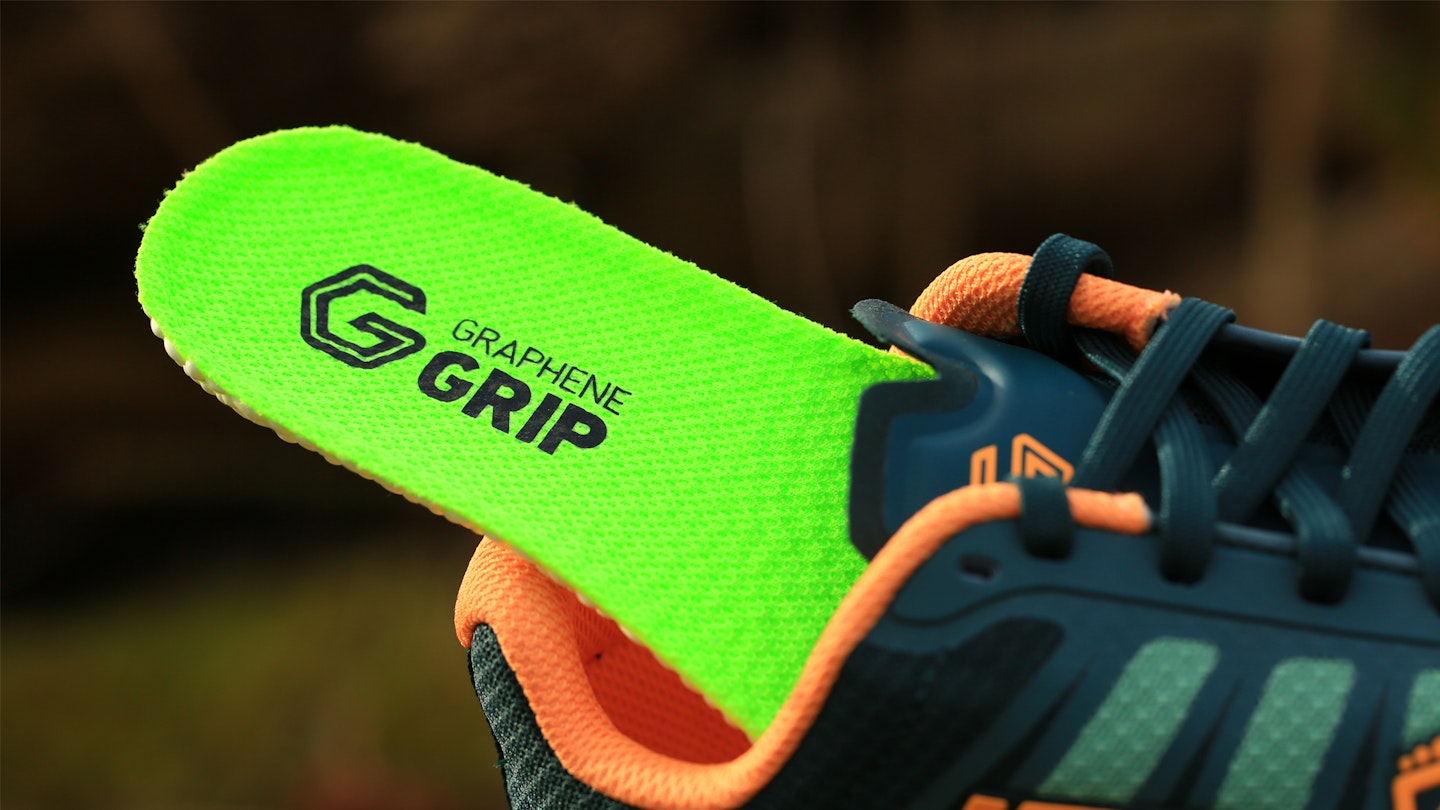
A bit of footwear care can seriously extend the lifespan of your outdoor gear. Keep fabrics clean to maintain breathability, and waterproof fabrics need reproofing every so often to maintain water repellency. Here are the main staples of our kit care collections...
Best dryer bags
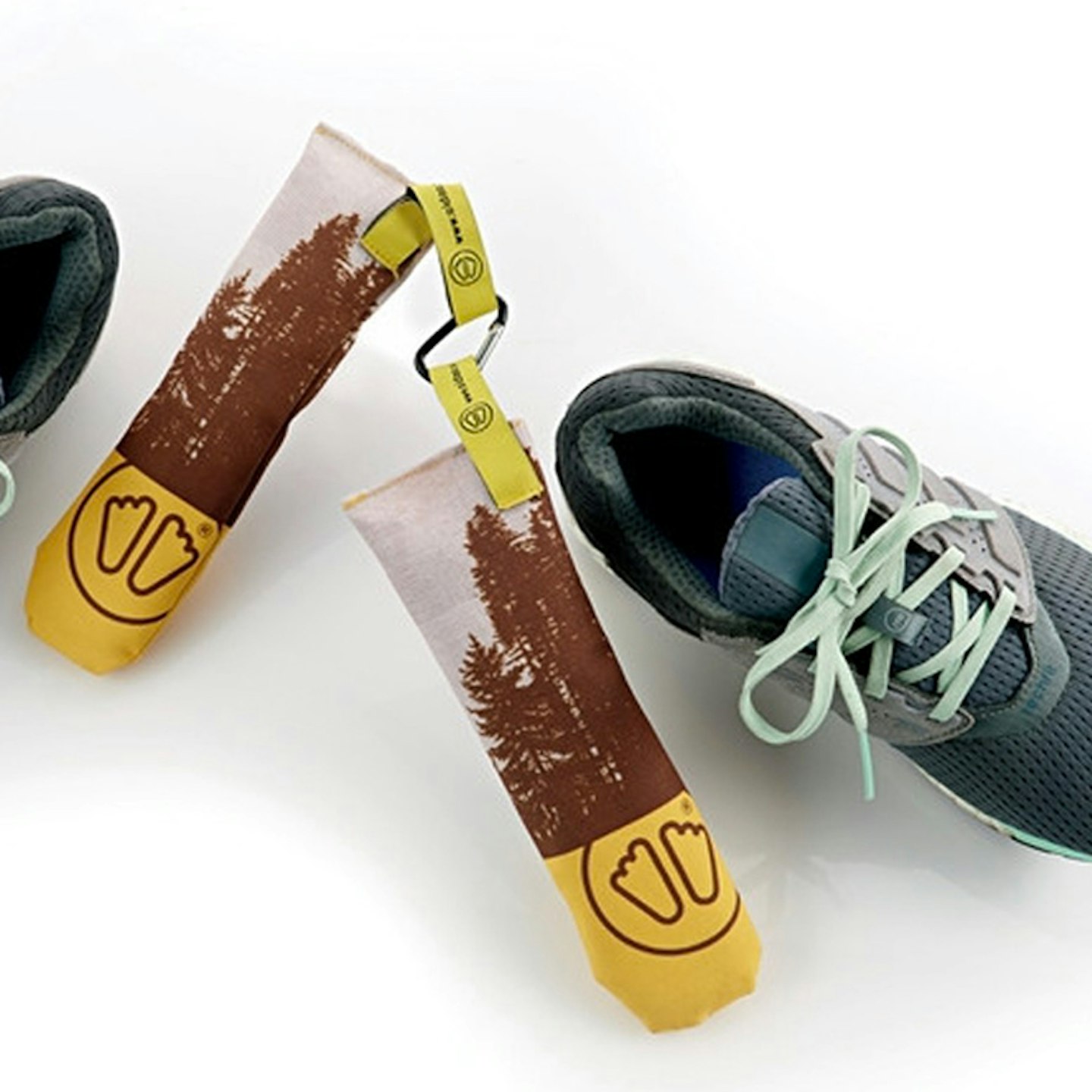 Sidas
Sidaswww.sidas.com
Especially as the weather is getting worse, we can't recommend these dryer bags enough. While the other products in this list will keep your shoes squeaky clean on the outside, these will help soak up the moisture from your running shoes on the inside. This is crucial for mitigating that lethal post-run 'pong'.
The way they work is pretty neat – the sacks are stuffed with 100% cedar wood, which absorbs moisture out of the inside of a shoe four times quicker than air drying. They're also re-useable – simply hang them up to dry after use for six hours in between runs, then they're ready to go again!
Pros
- Good for multiple uses
- Greatly reduces chances of mould
- Refreshes your shoes in 4 hours
Cons
- Takes up to 6 hours between uses
Best cleaner spray
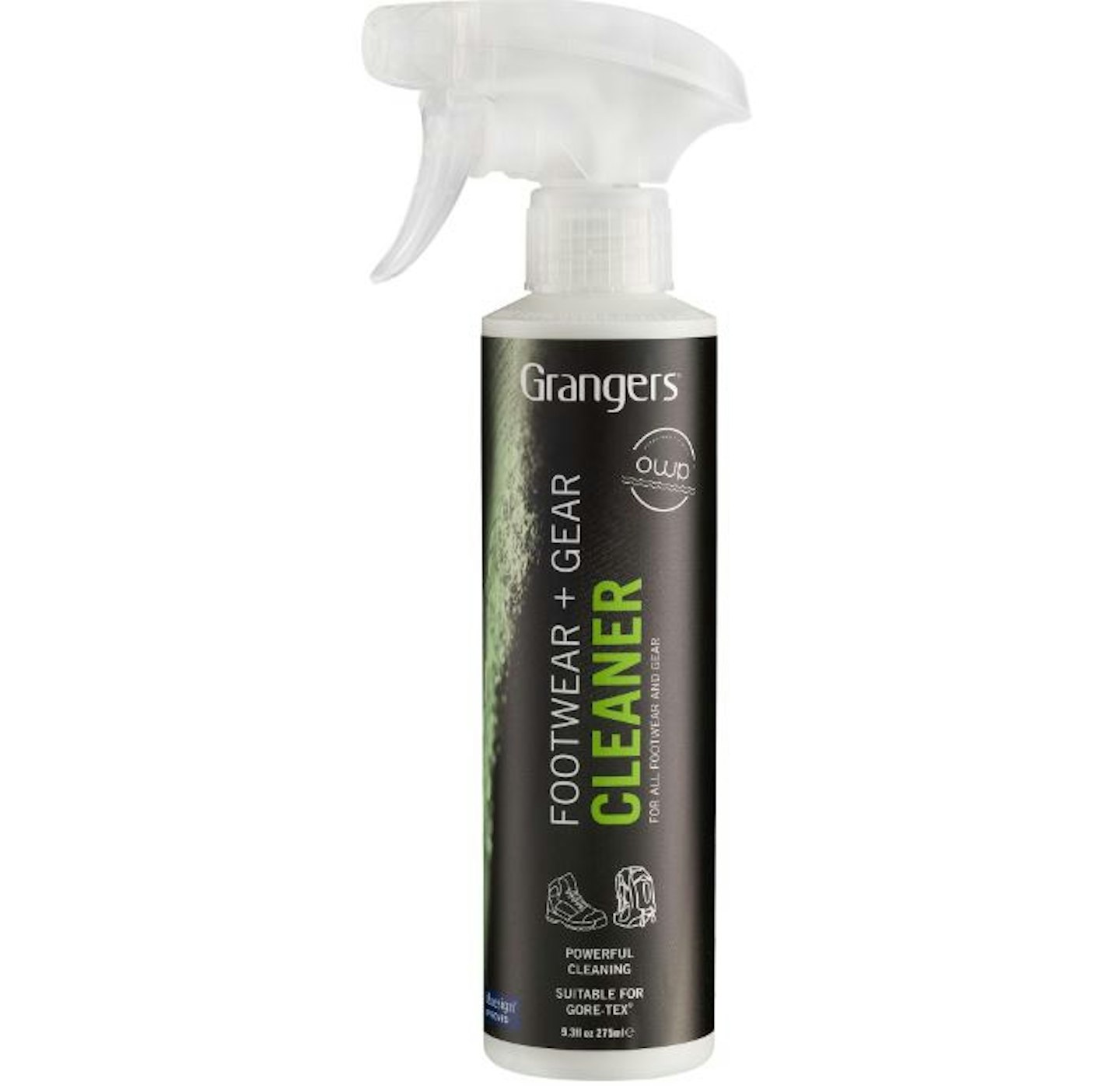
This spray is a PFC-free, environmentally conscious spot cleaner (275ml), designed for footwear and outdoors gear. It's also Gore-Tex friendly, so won't denigrate the longevity of your waterproofing.
Pros
- Sustainable ingredients
- Cleans without reducing protection
- Good value for long term use
Cons
- Best used with a good amount of water
Best care kit
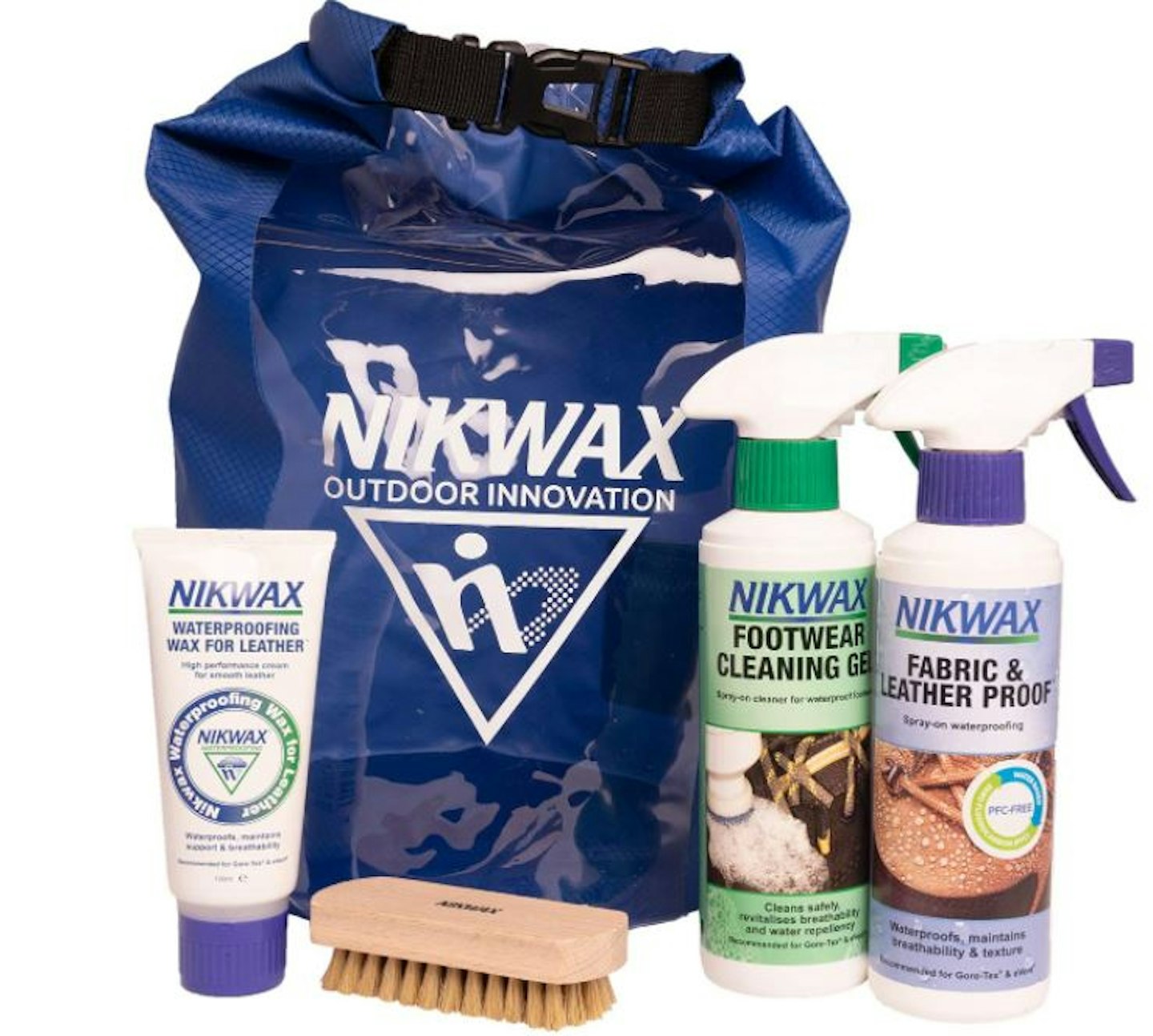 Amazon
AmazonThis Nikwax bundle is a footwear care kit for leather and fabric materials, complete with a brush and a dry bag. This kit earns high marks for its sustainability credentials, and the included dry bag proves invaluable during extended running trips and adventures.
Pros
- Versatile
- Dry bag is effective
- Can be used on multi-fabric items
Cons
- Brush can be quite coarse
About the authors
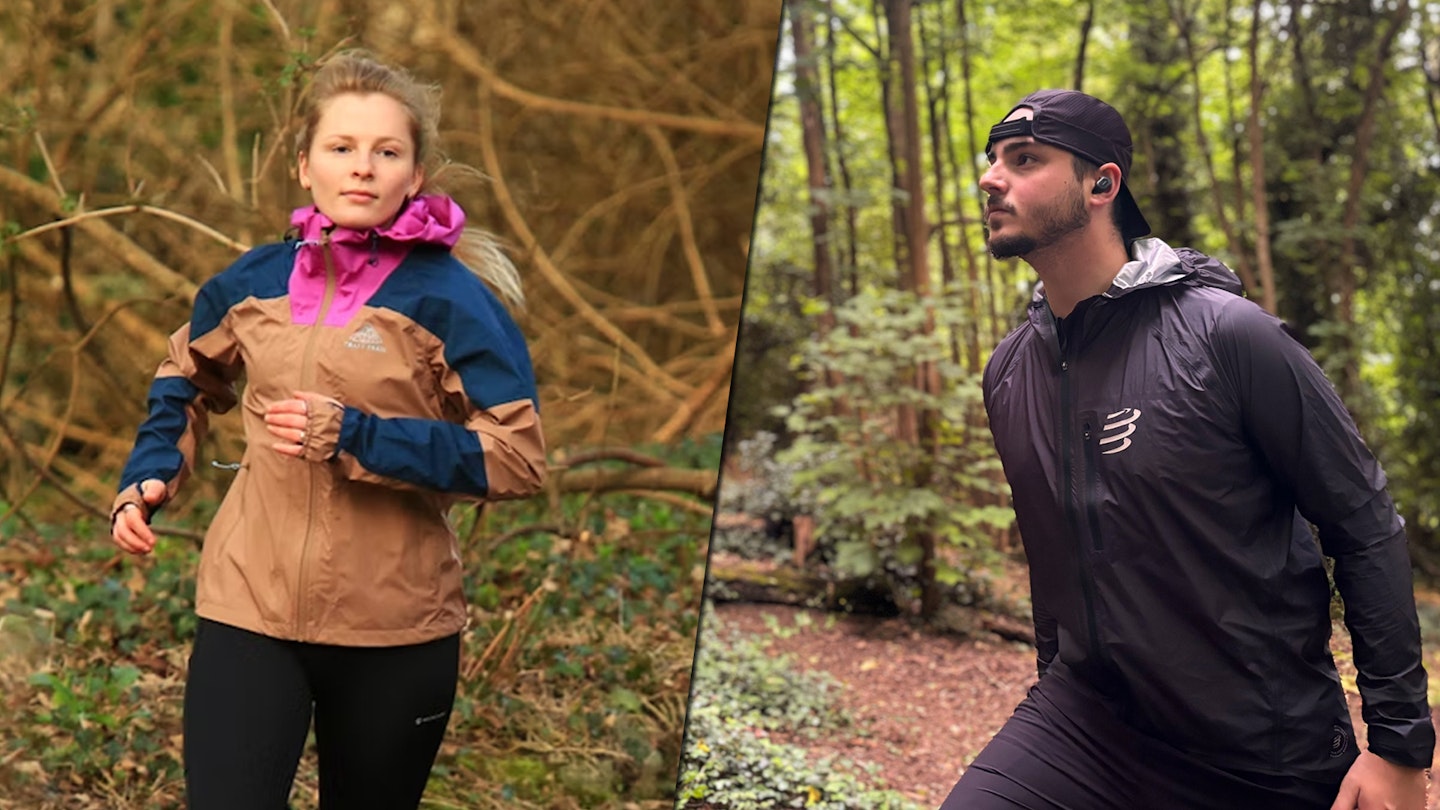
Our test team brings a wide range of running styles and preferences to the table. LFTO’s trail running guru Milo Wilson prefers slower paces and longer miles – ideal for putting all-day cushioning to the test. Marooned in Surrey, he can’t reach a soft trail without first navigating a Waitrose car park, which makes him the perfect candidate for hybrid shoes like his long-time favourite, the Saucony Xodus Ultra.
Kate Milsom, former LFTO trail editor and still one of our go-to testers, has raced competitive marathons and ultras. Her penchant for races across all surfaces has turned Kate into an unmatched expert in what makes a good road to trail model.
